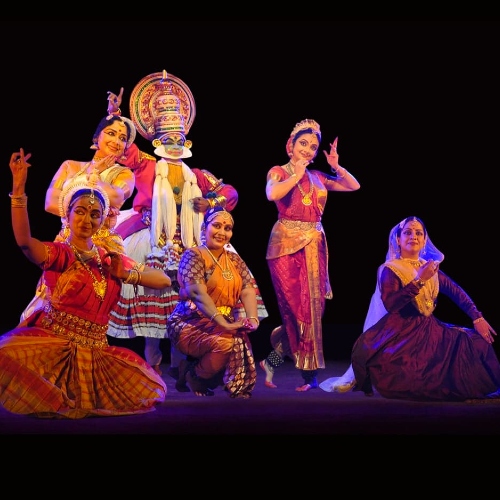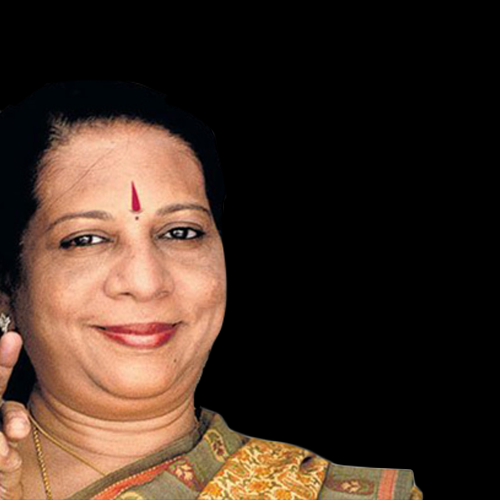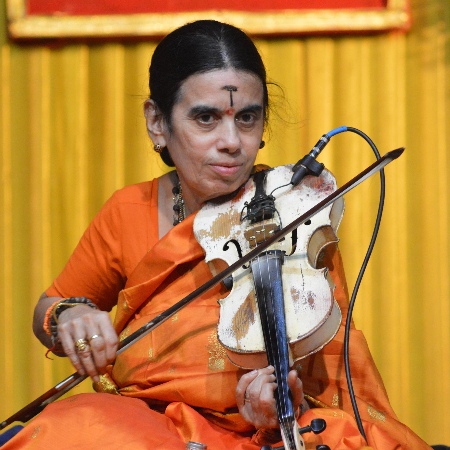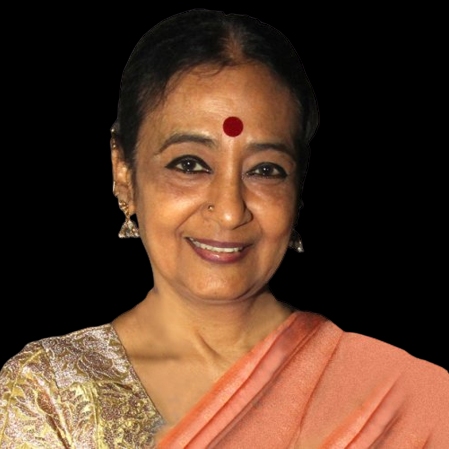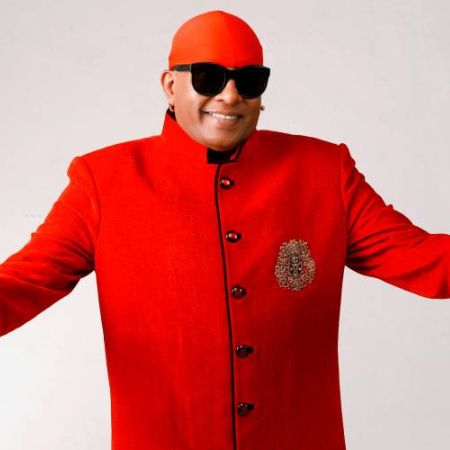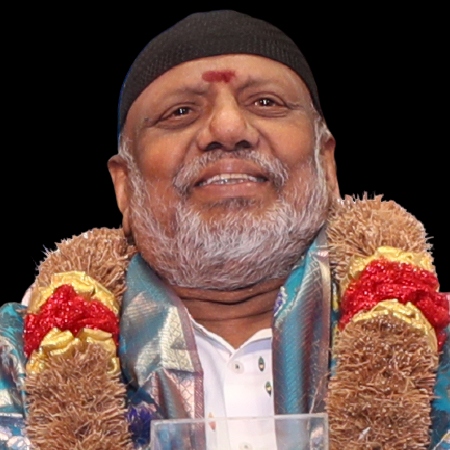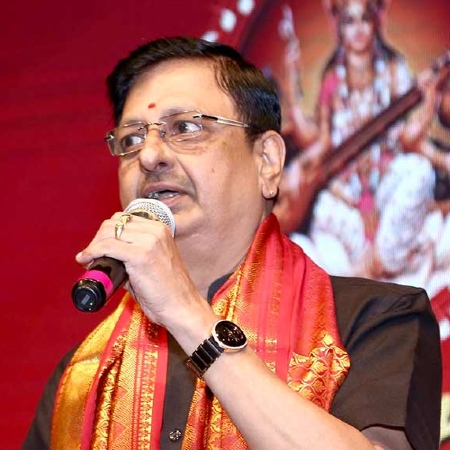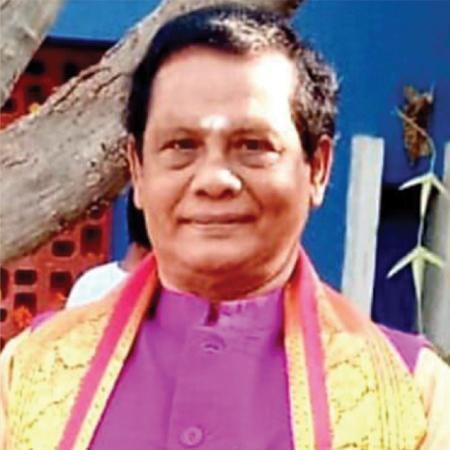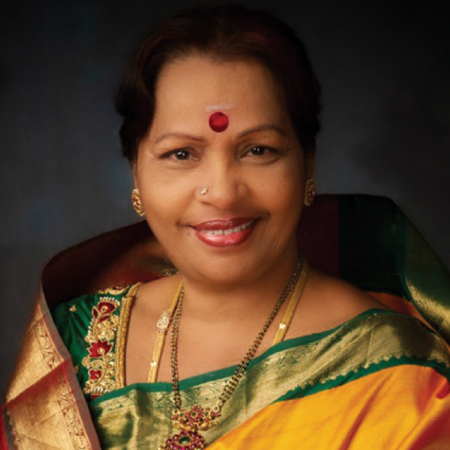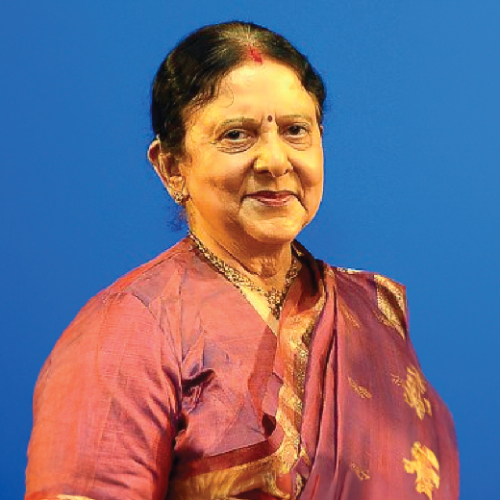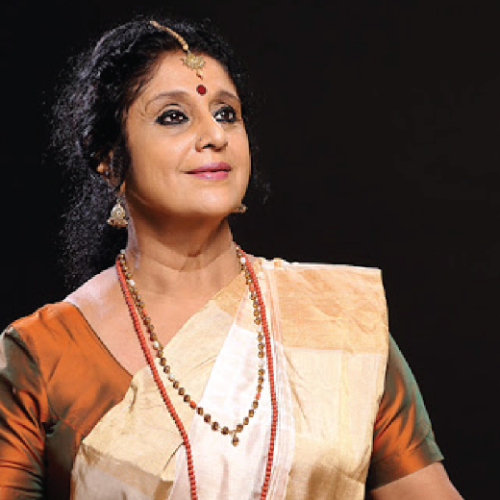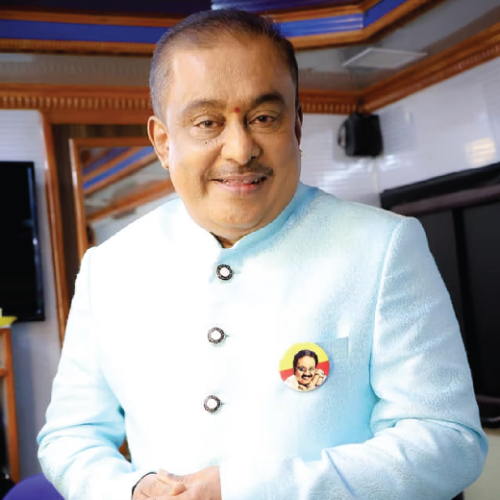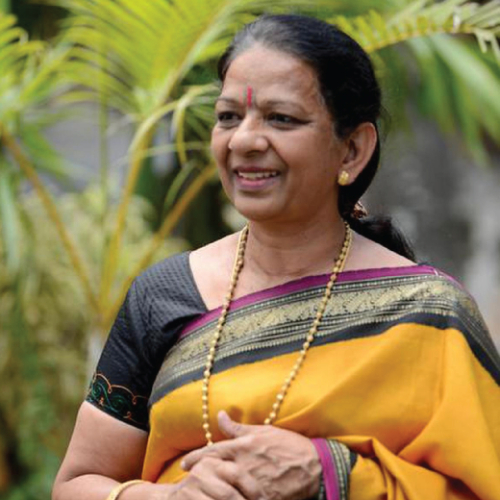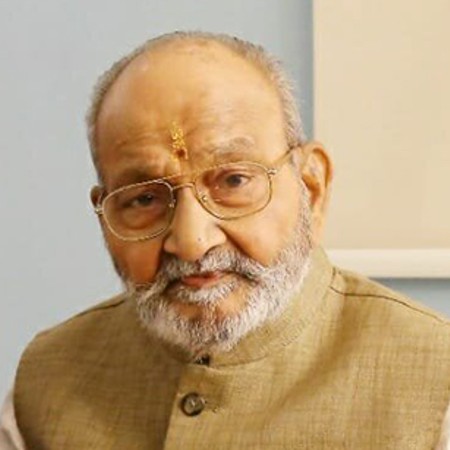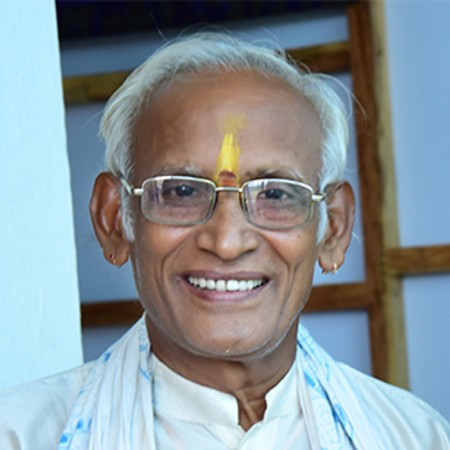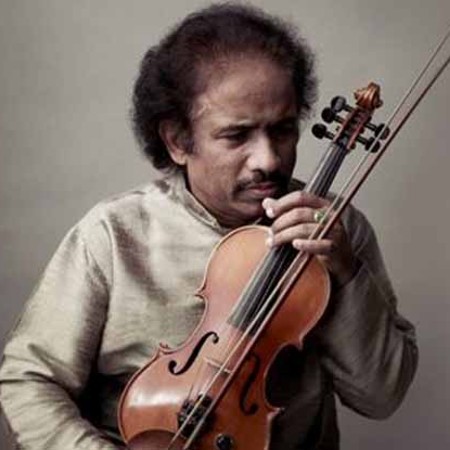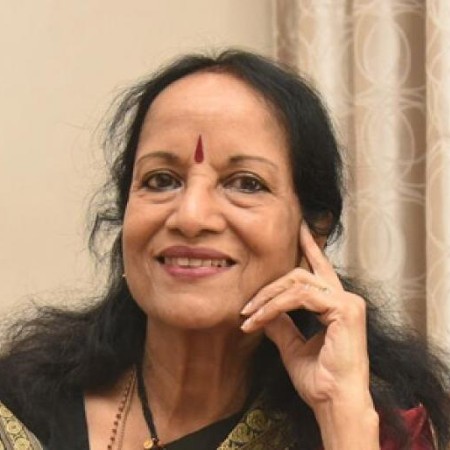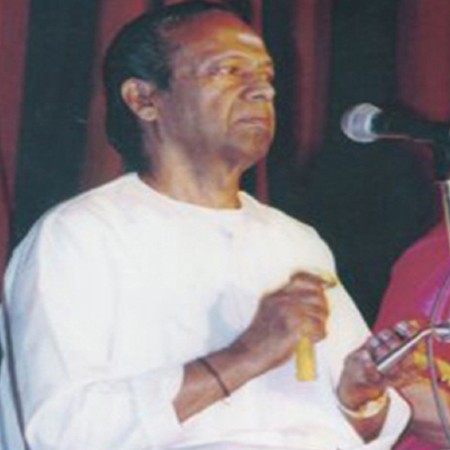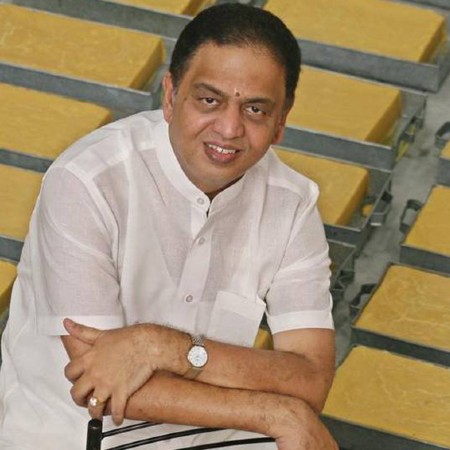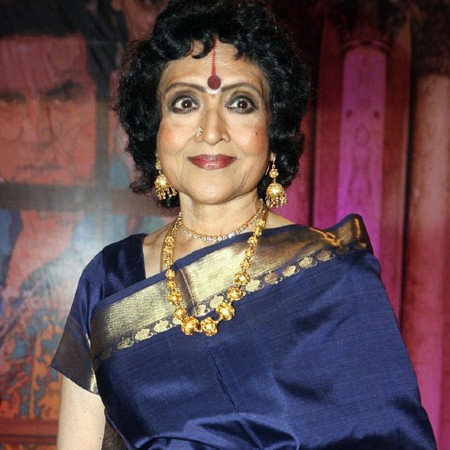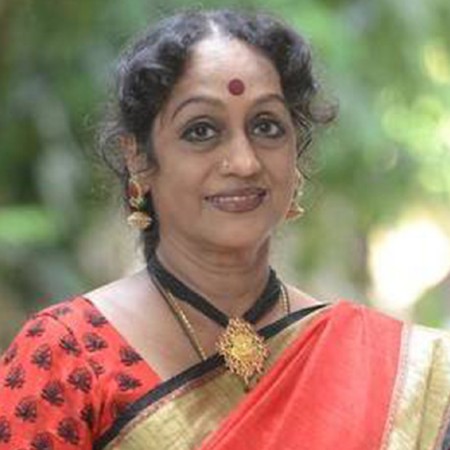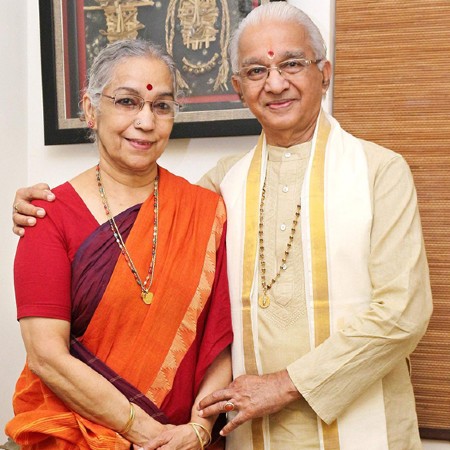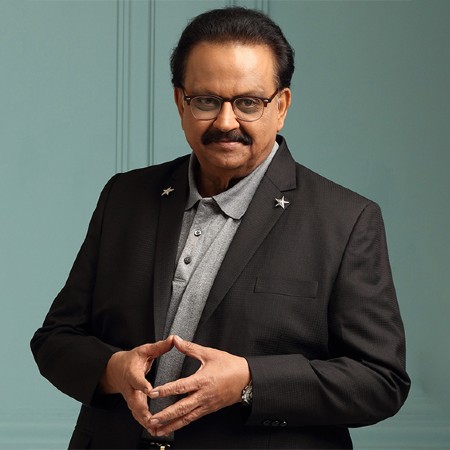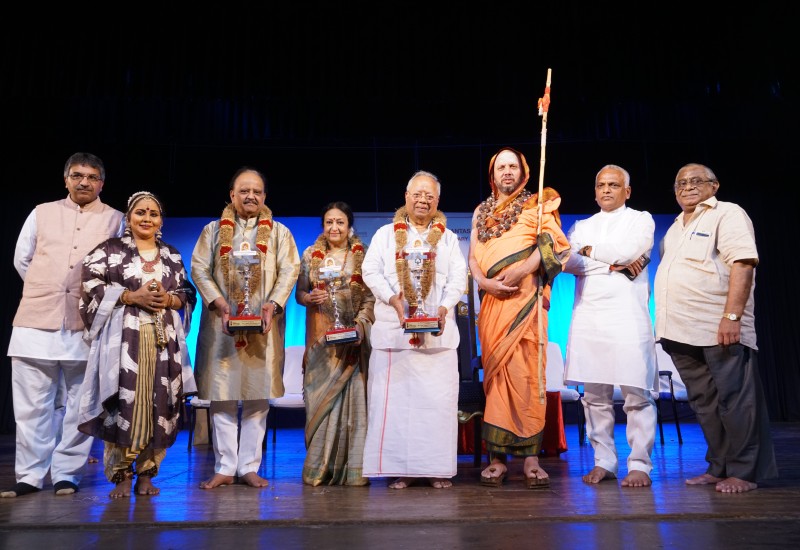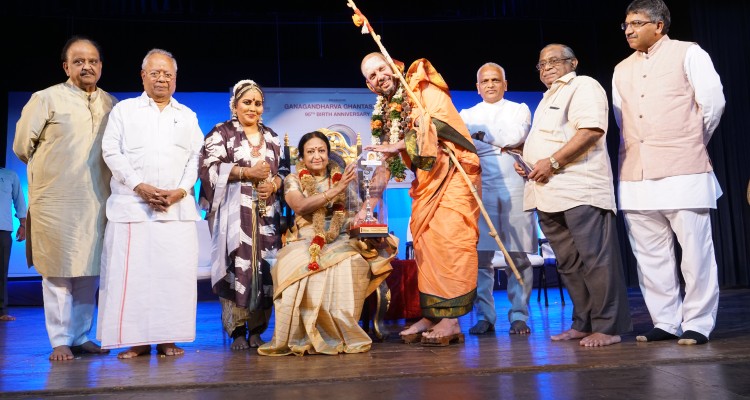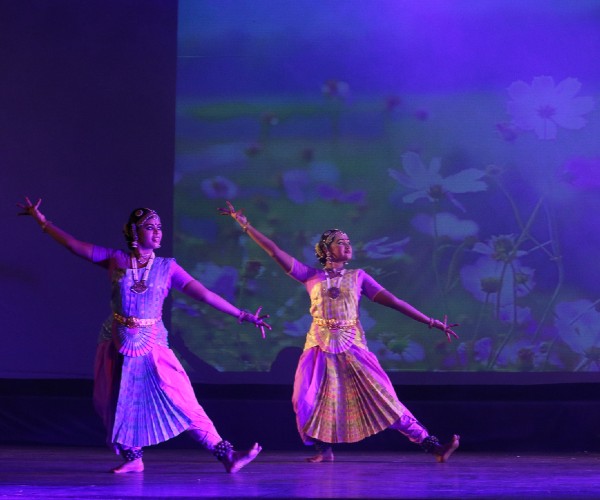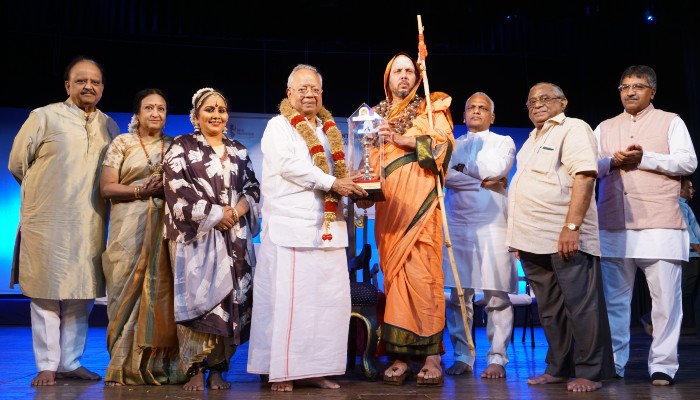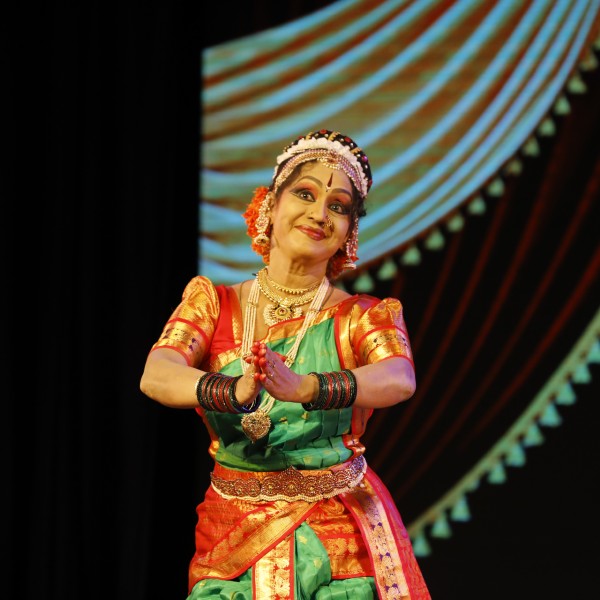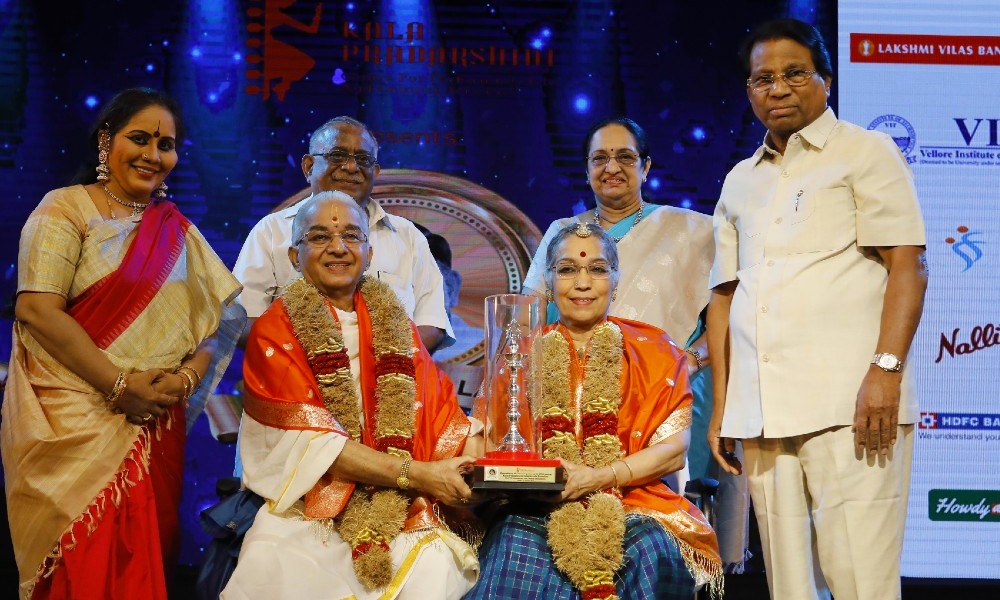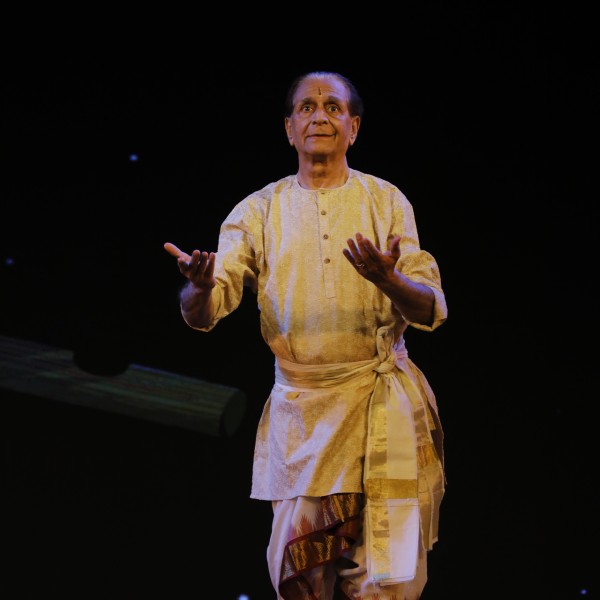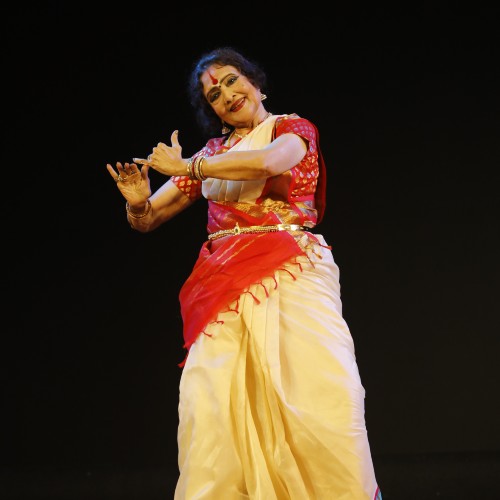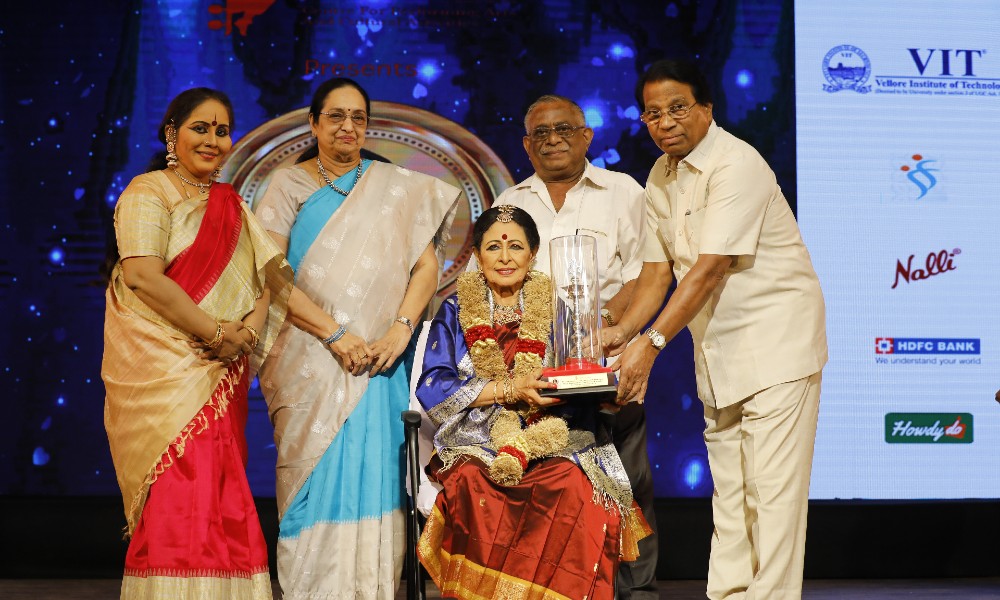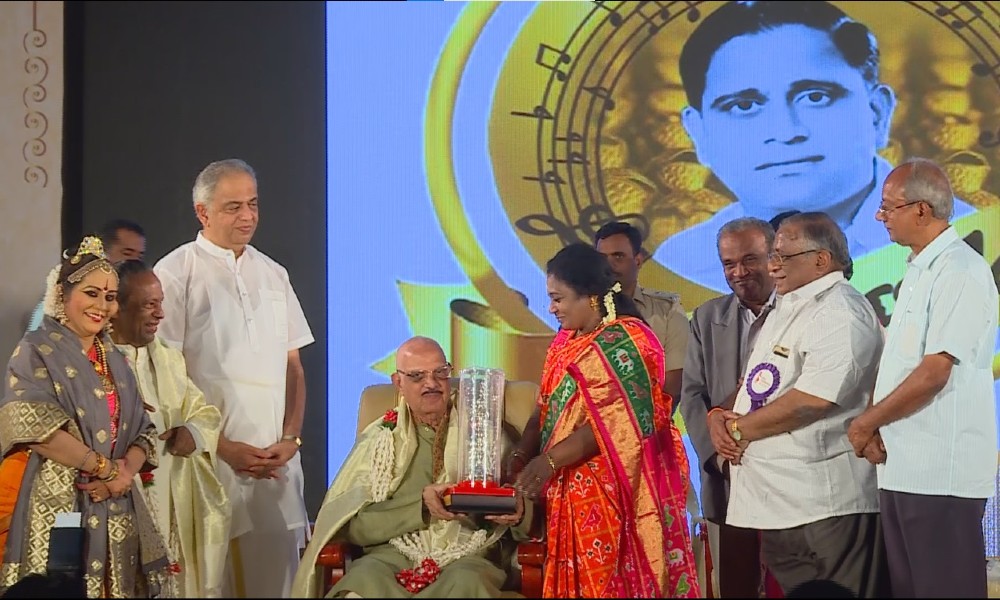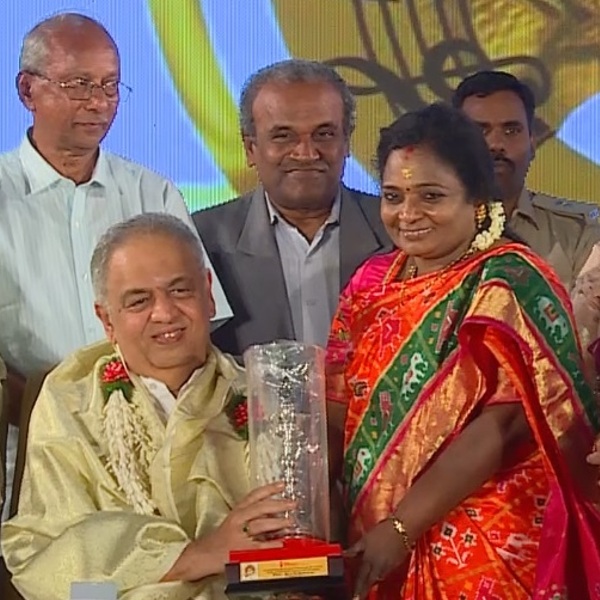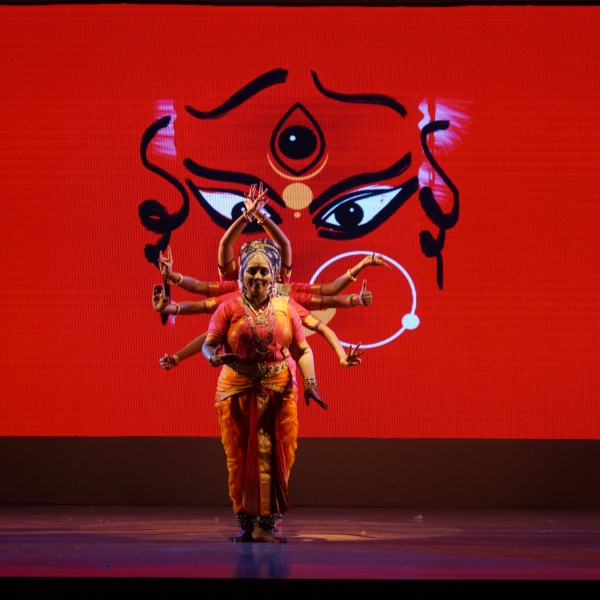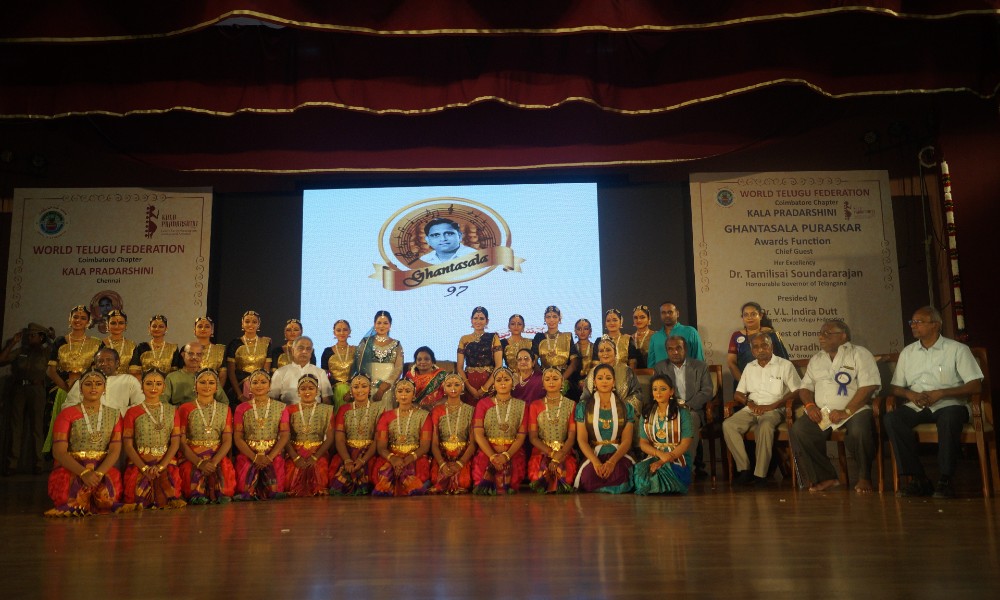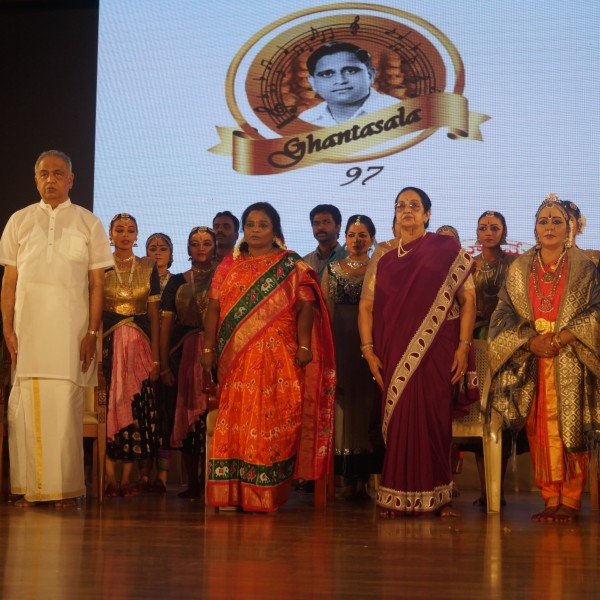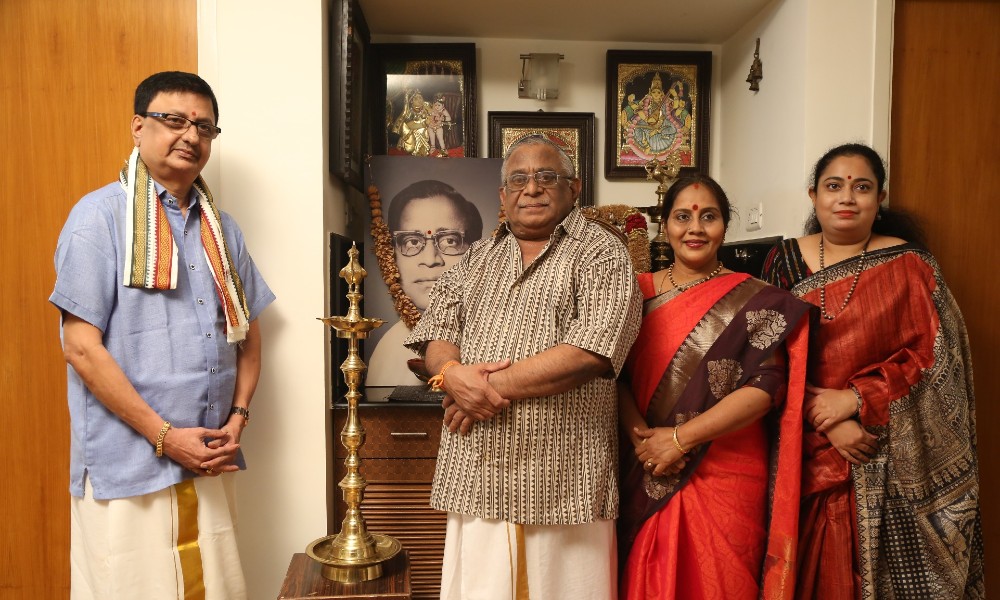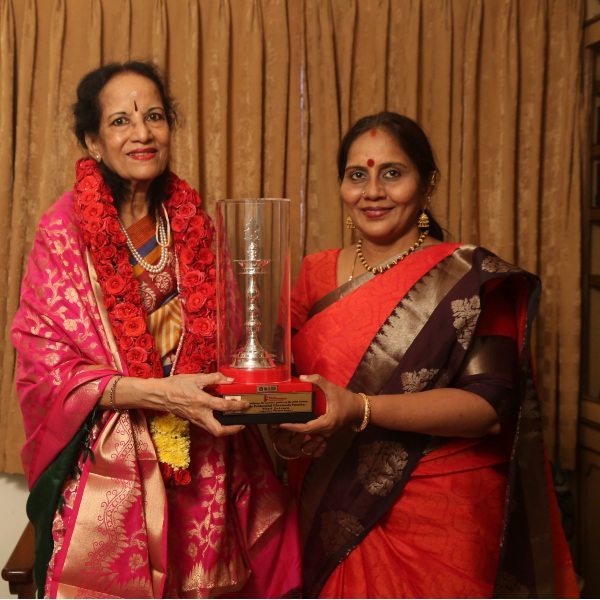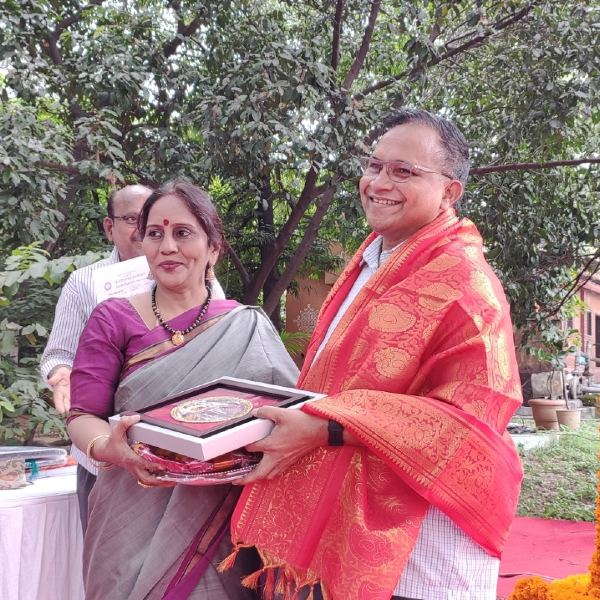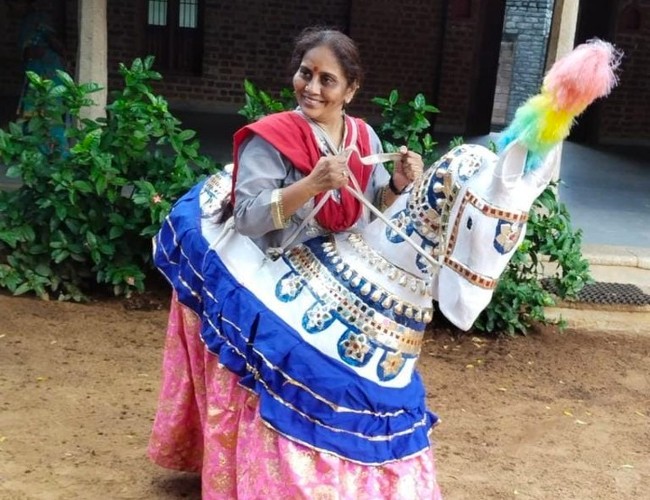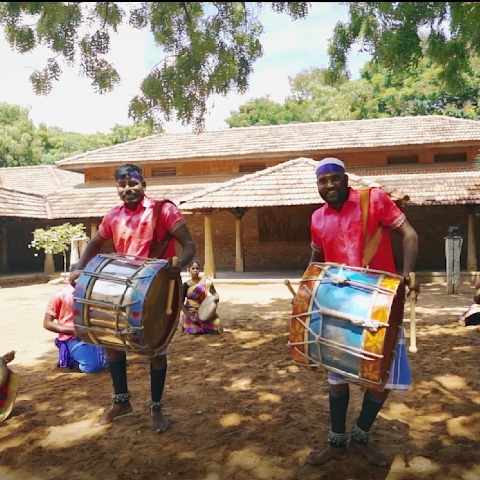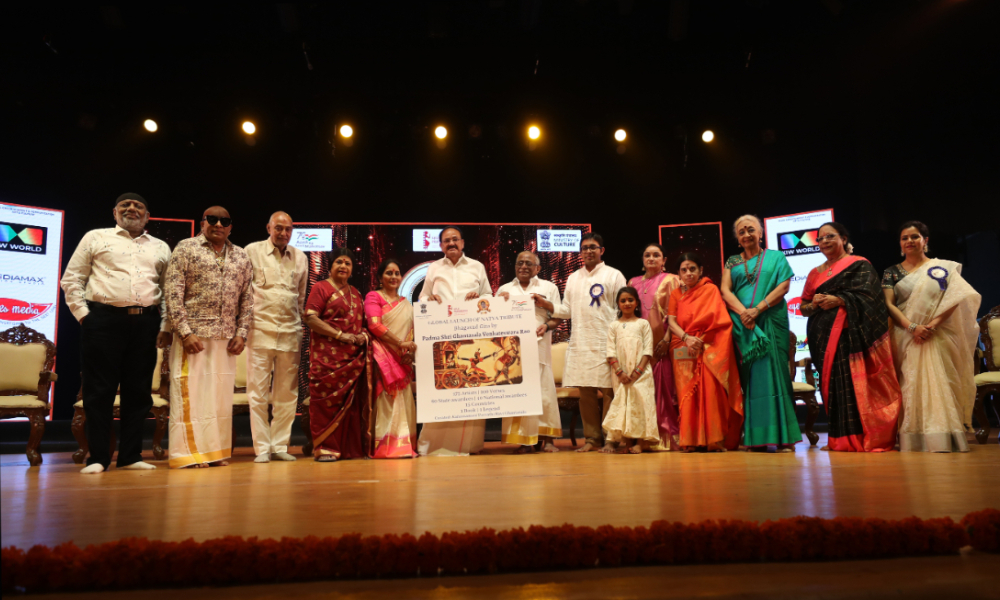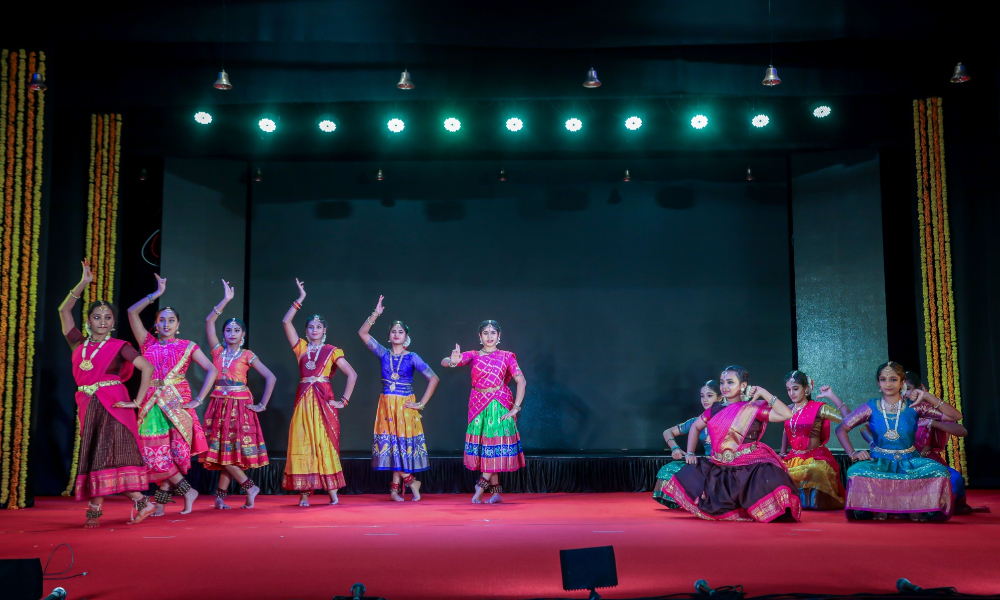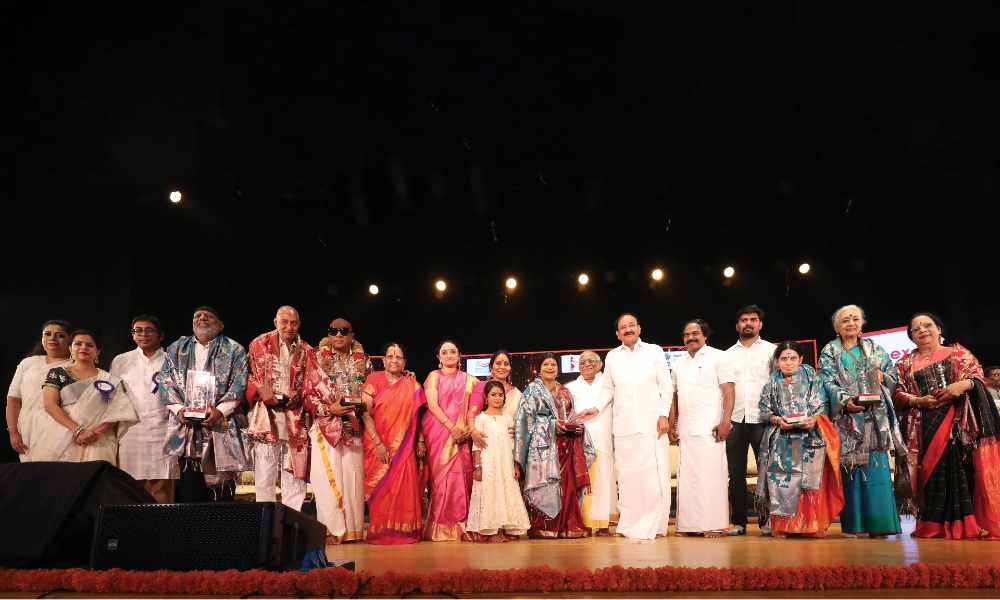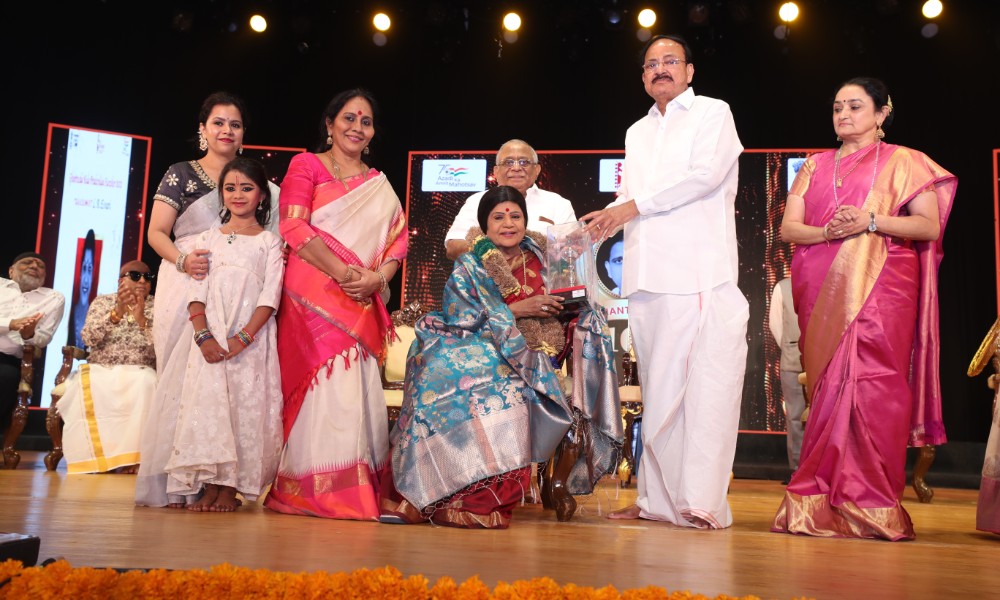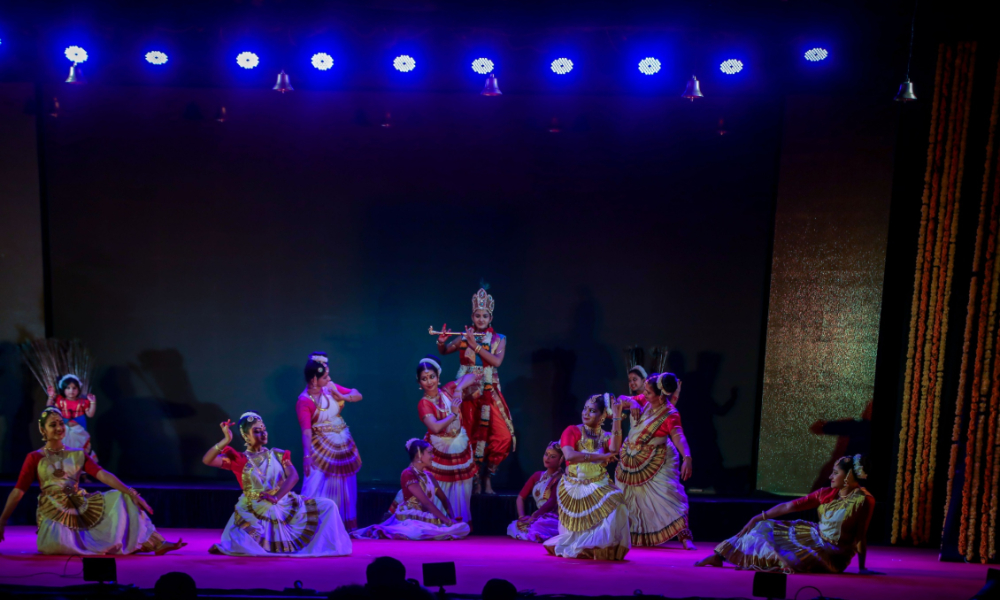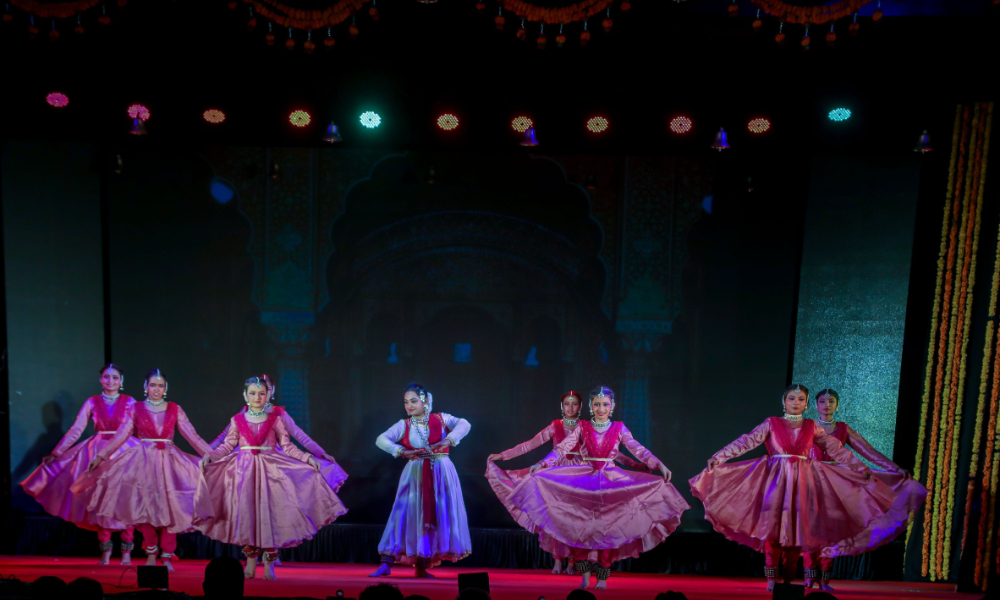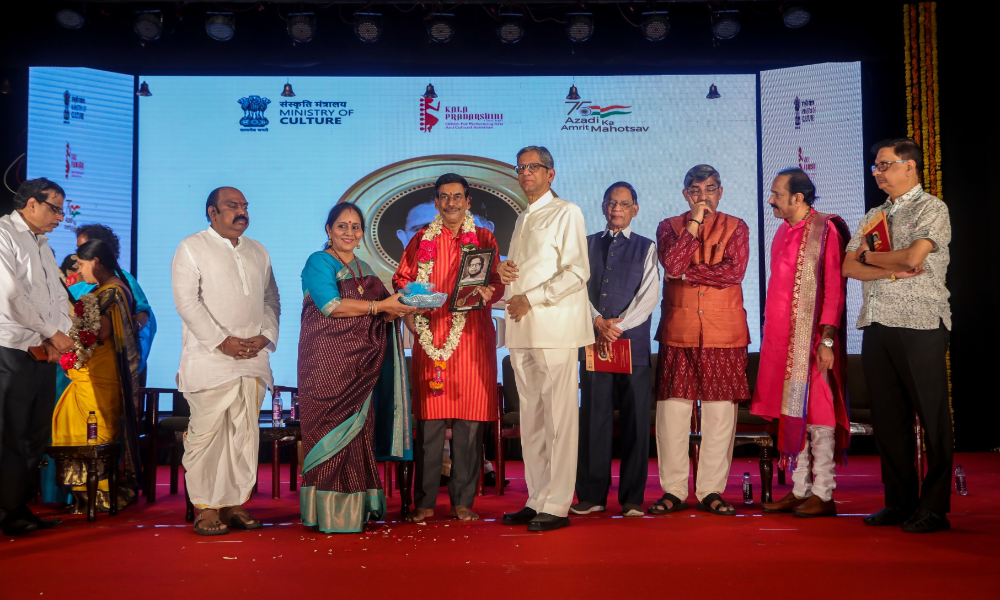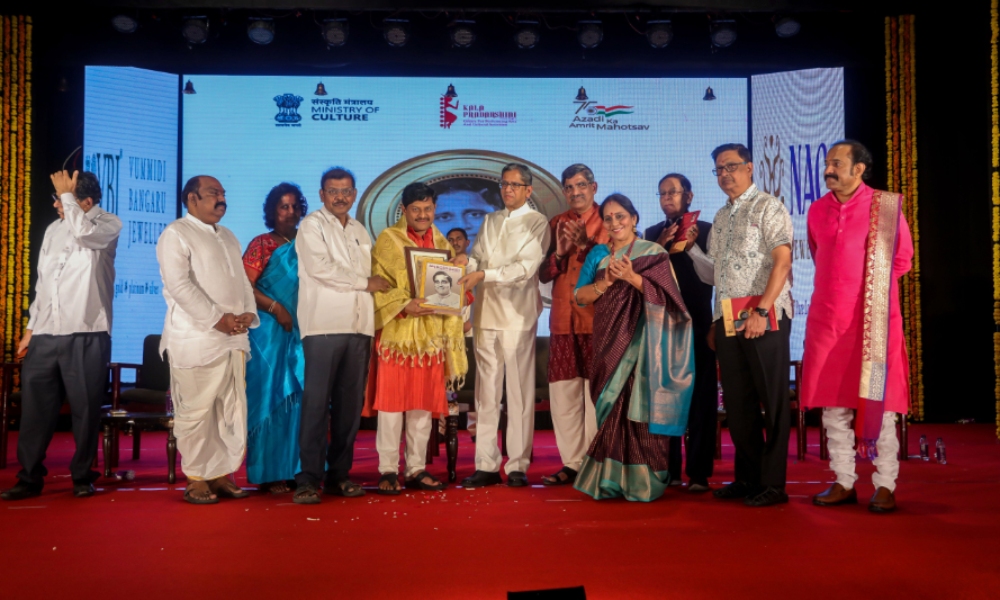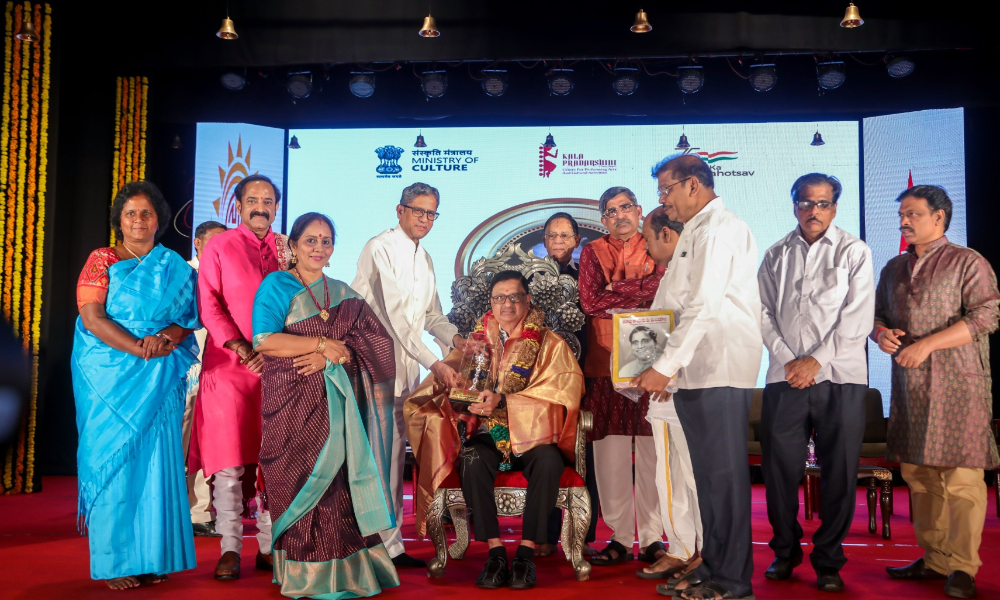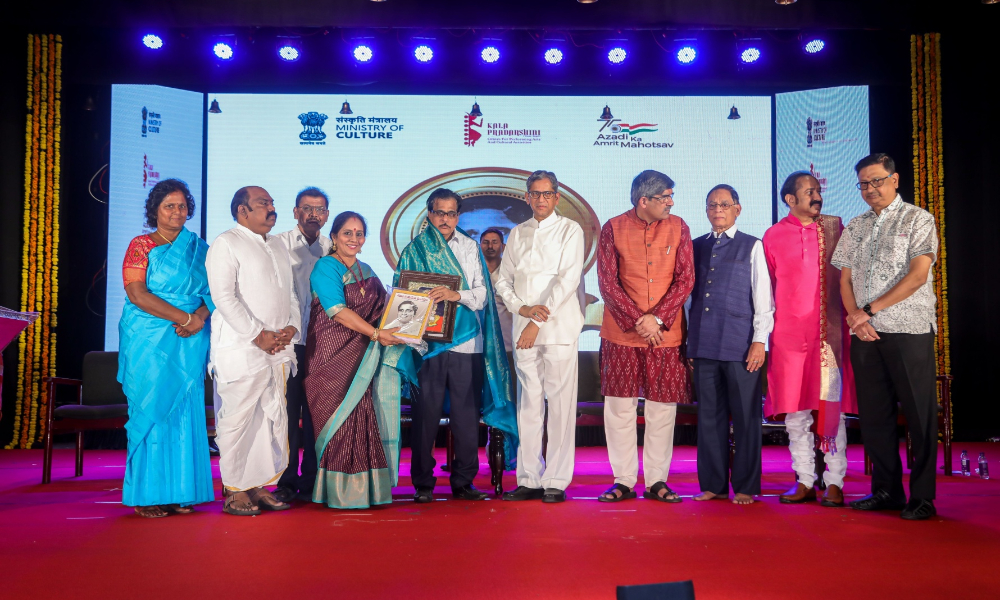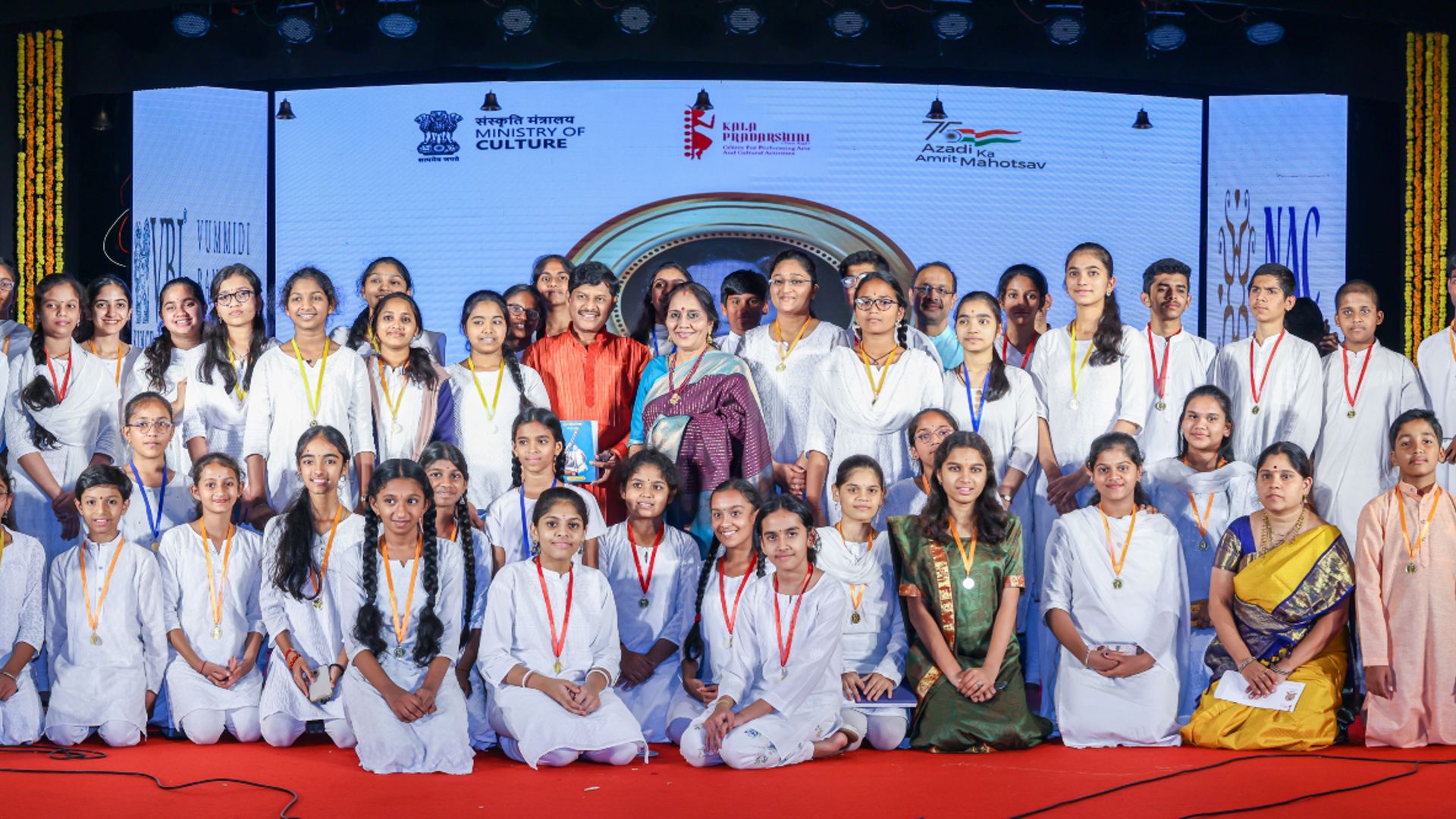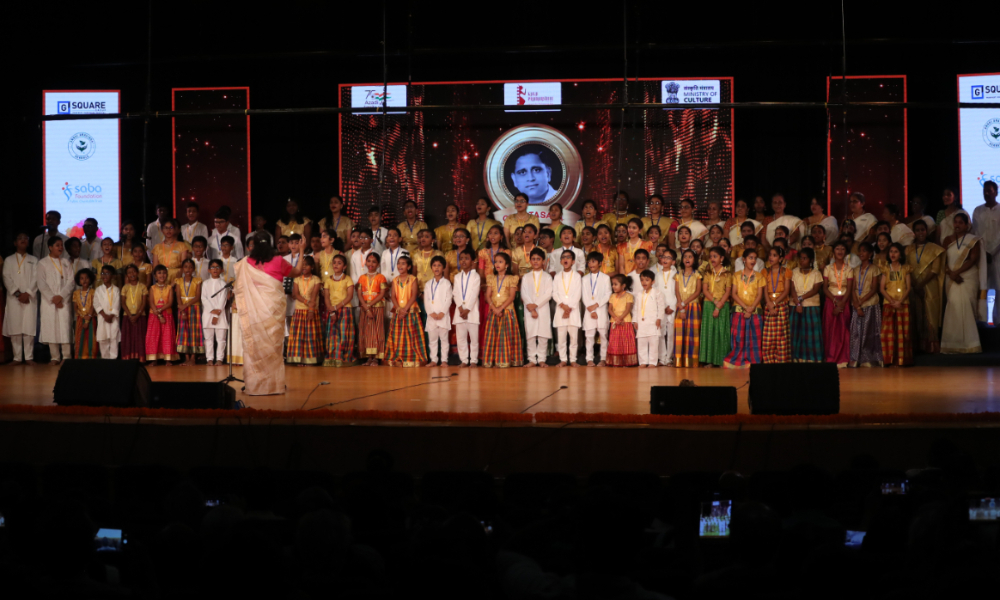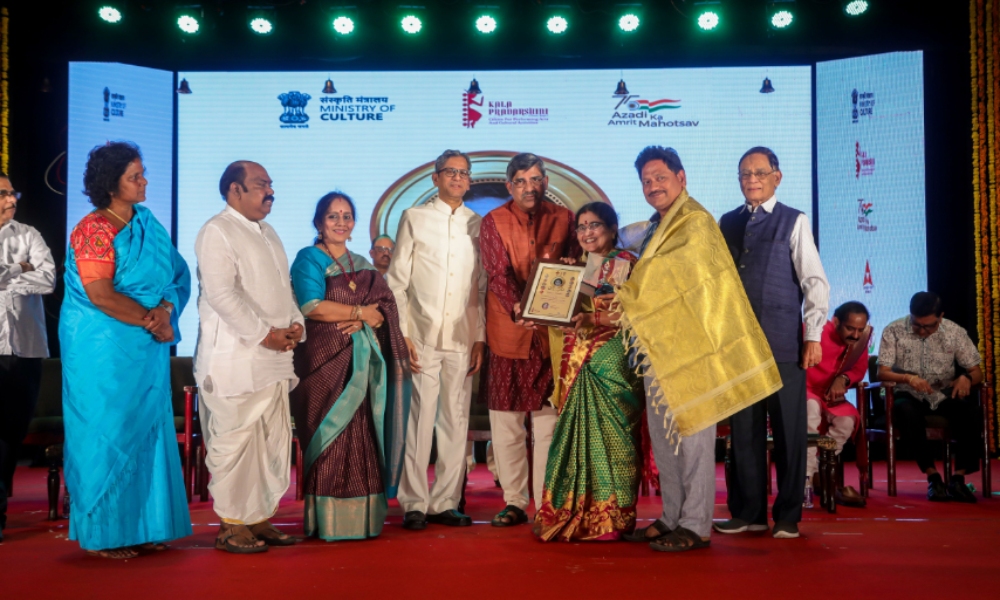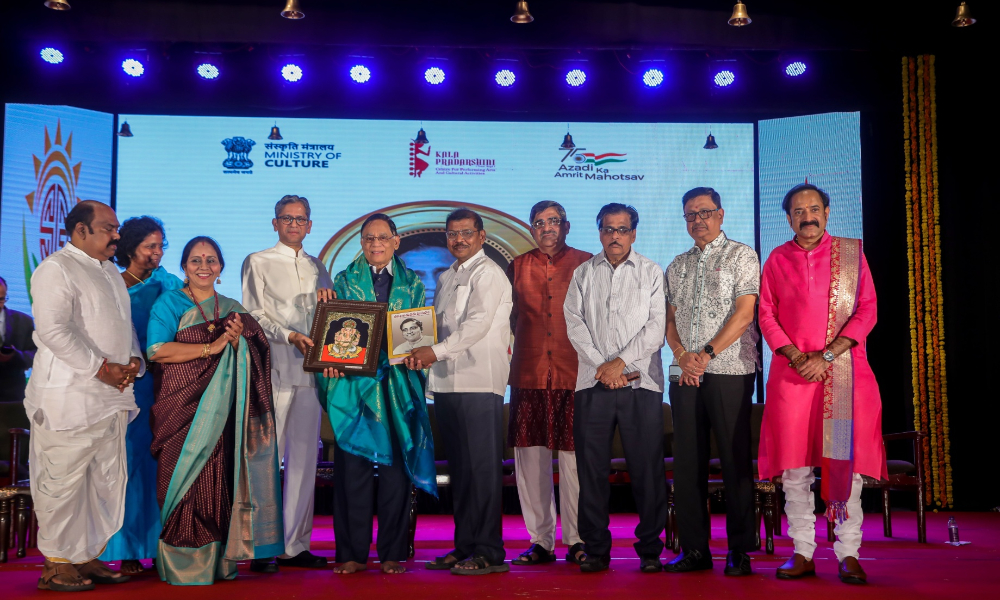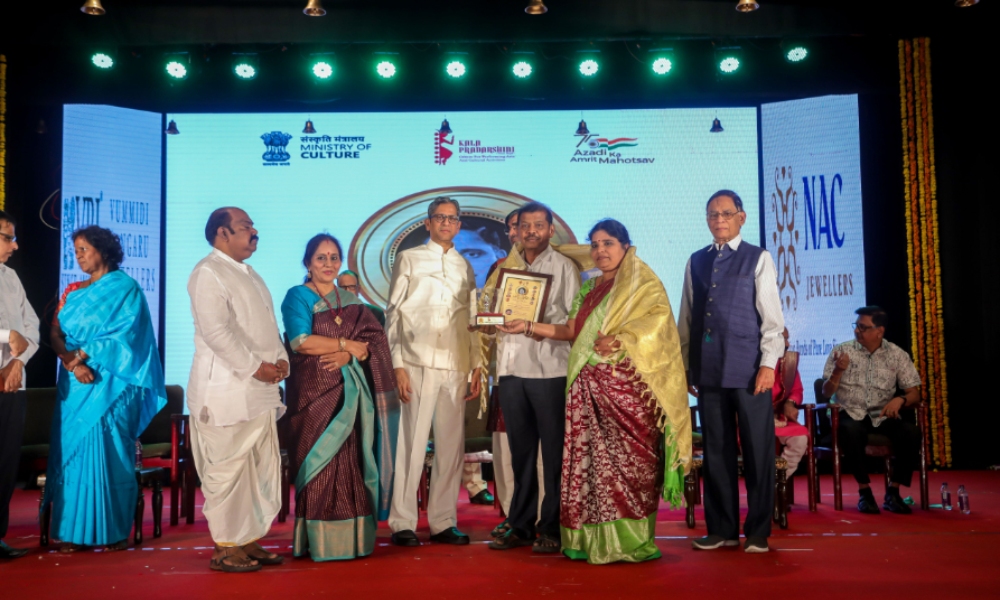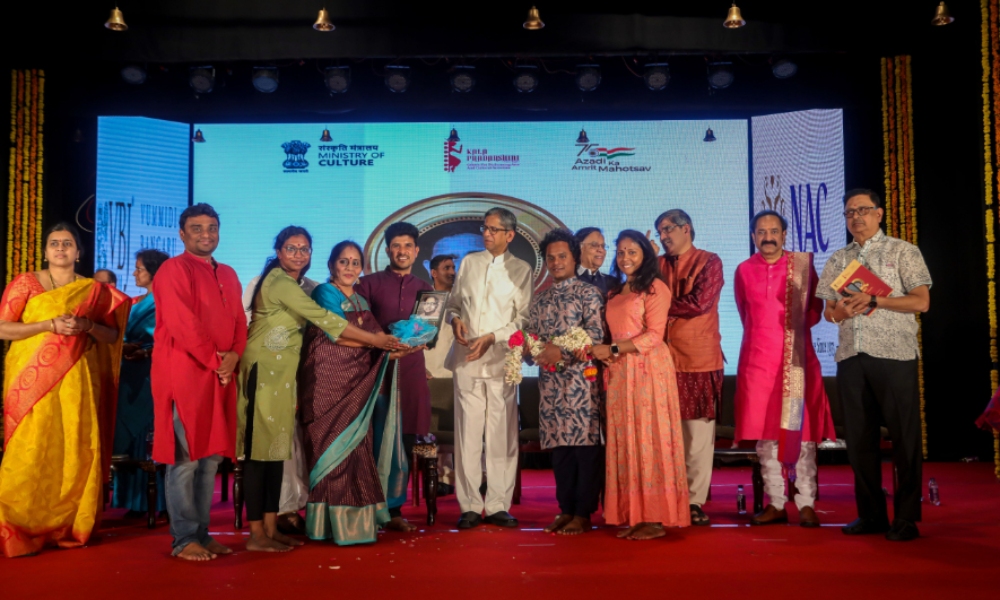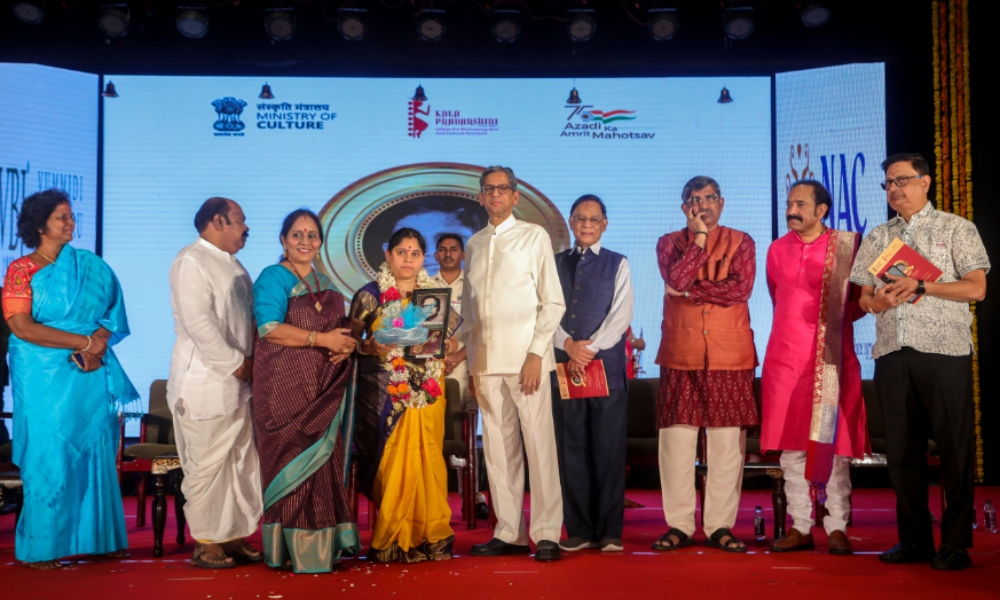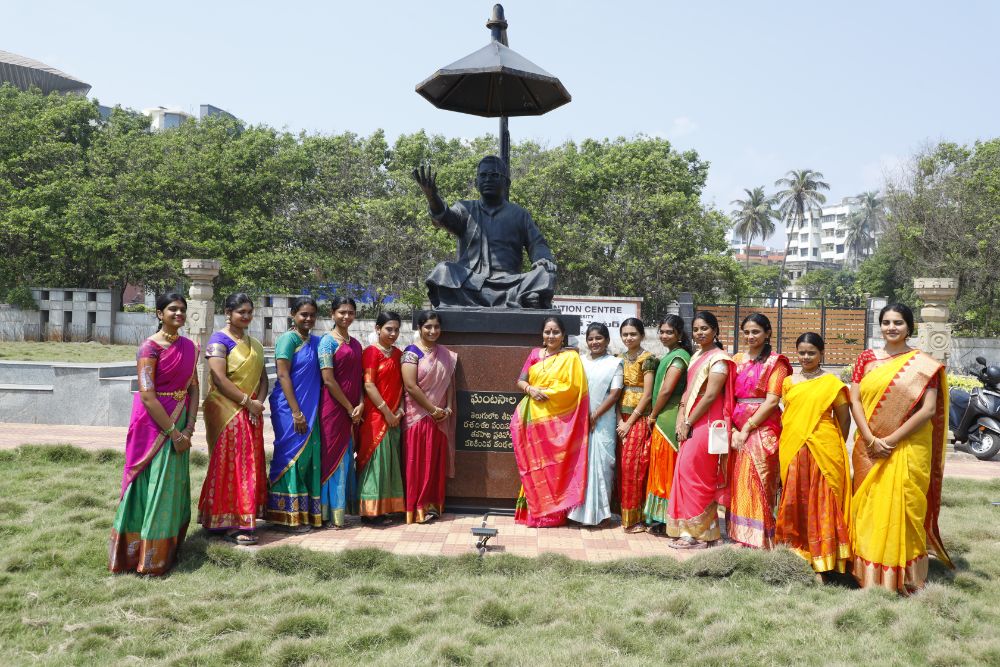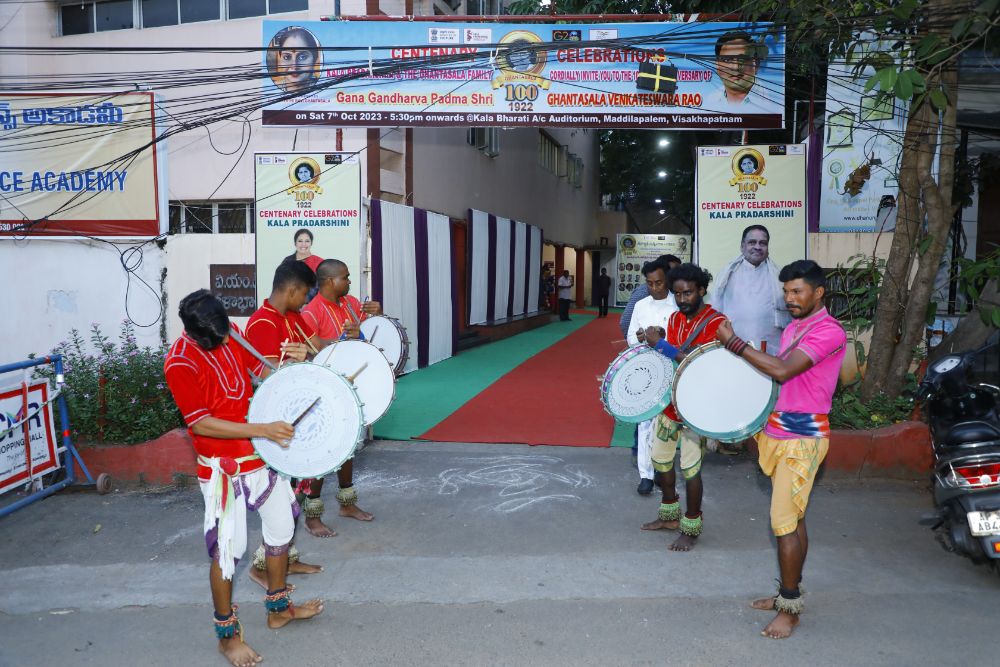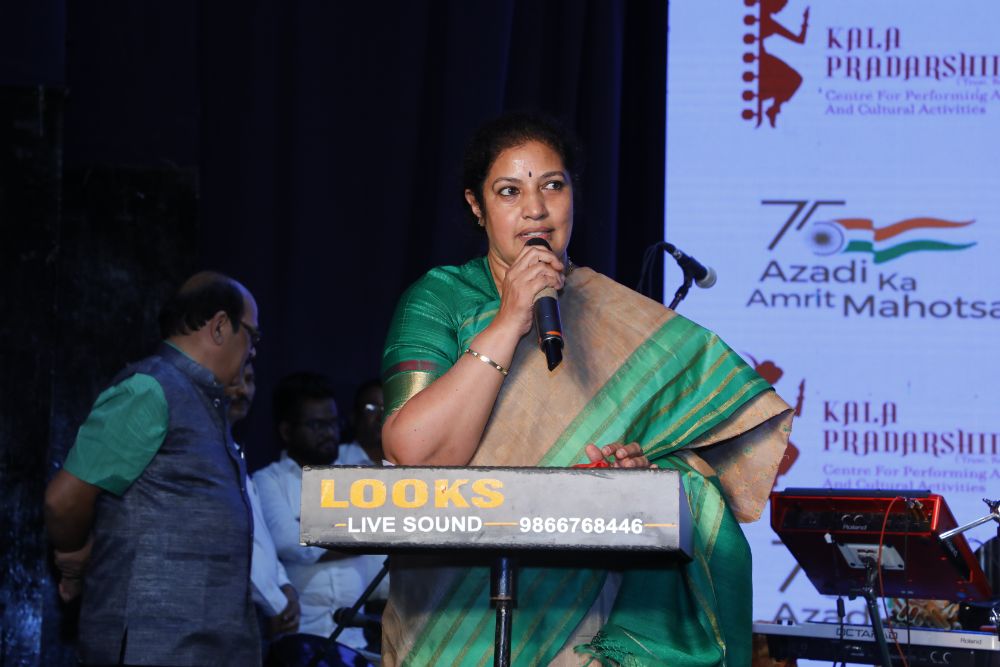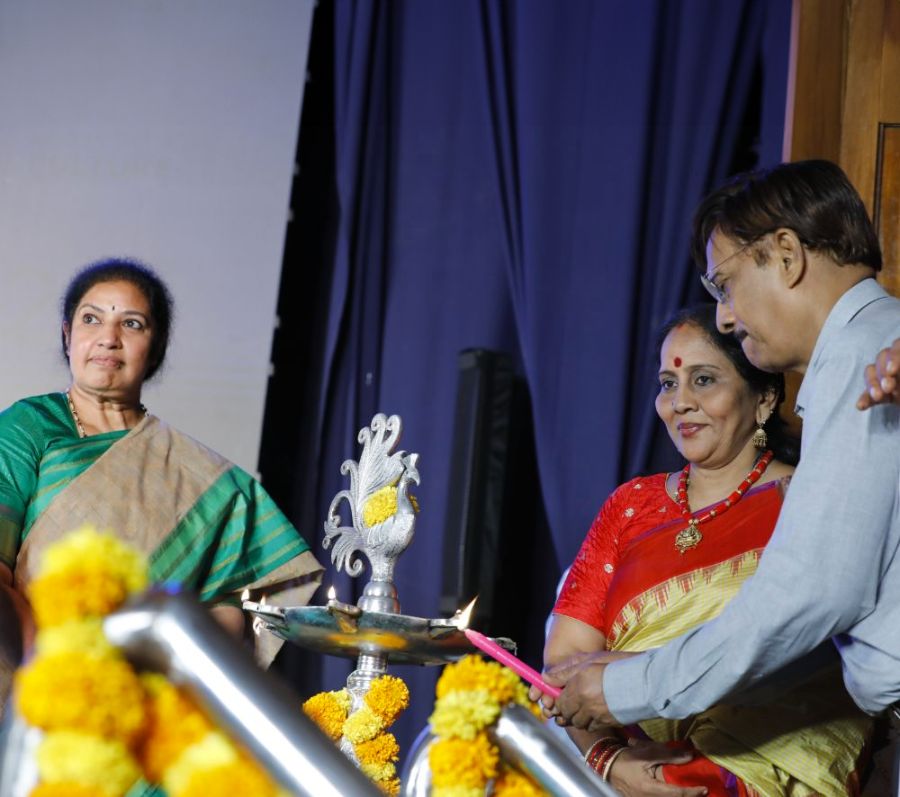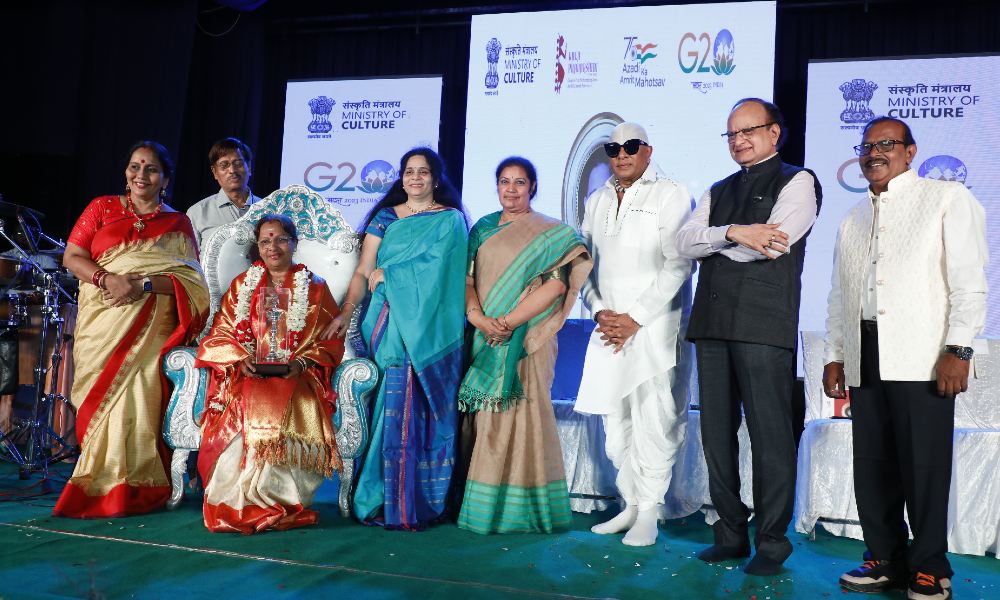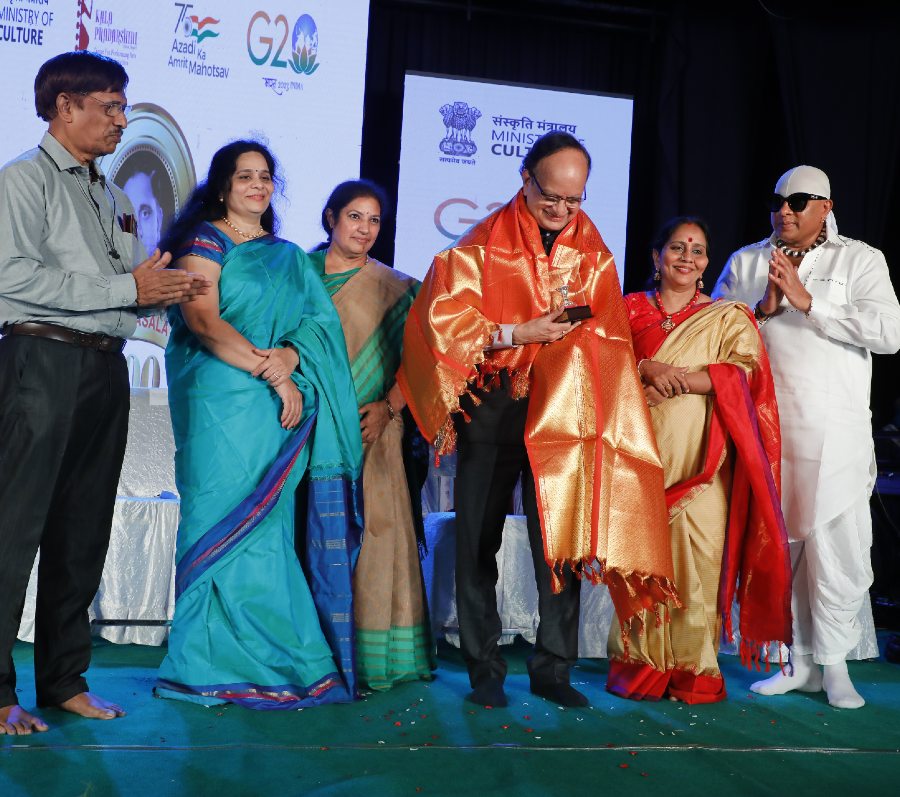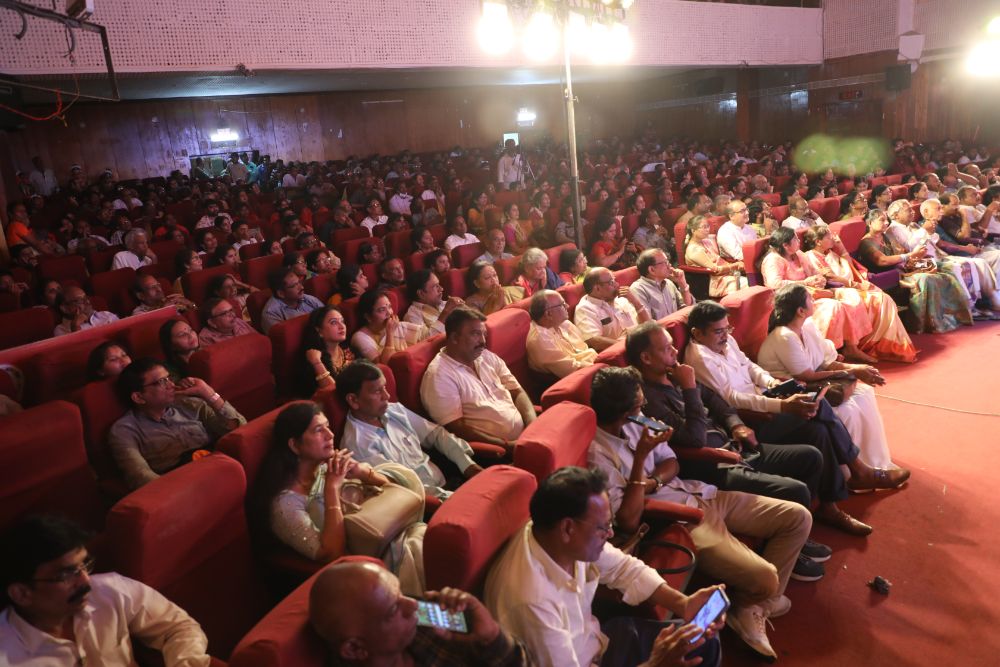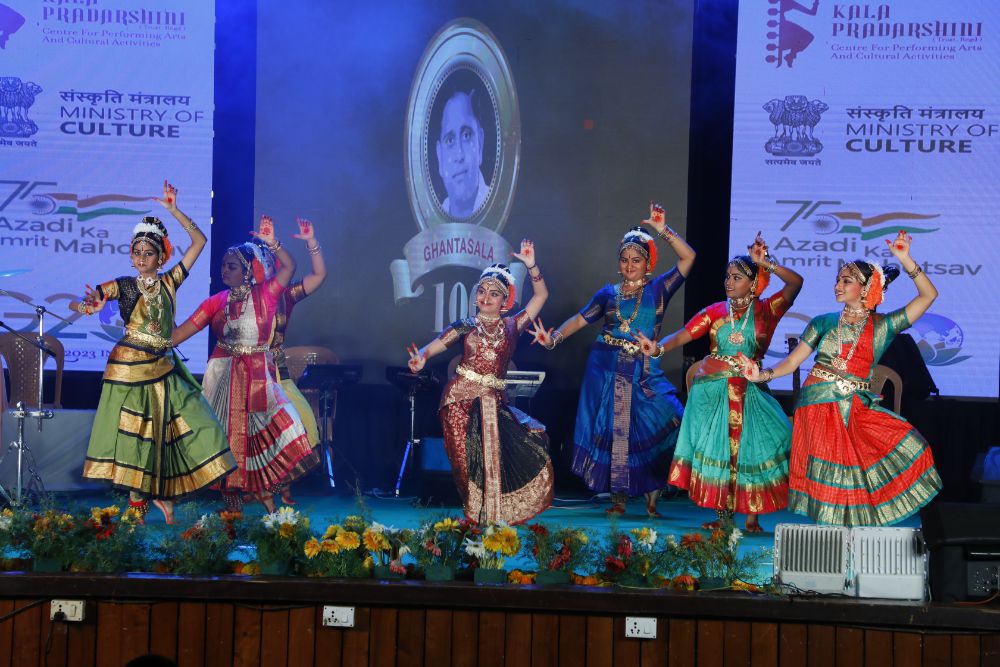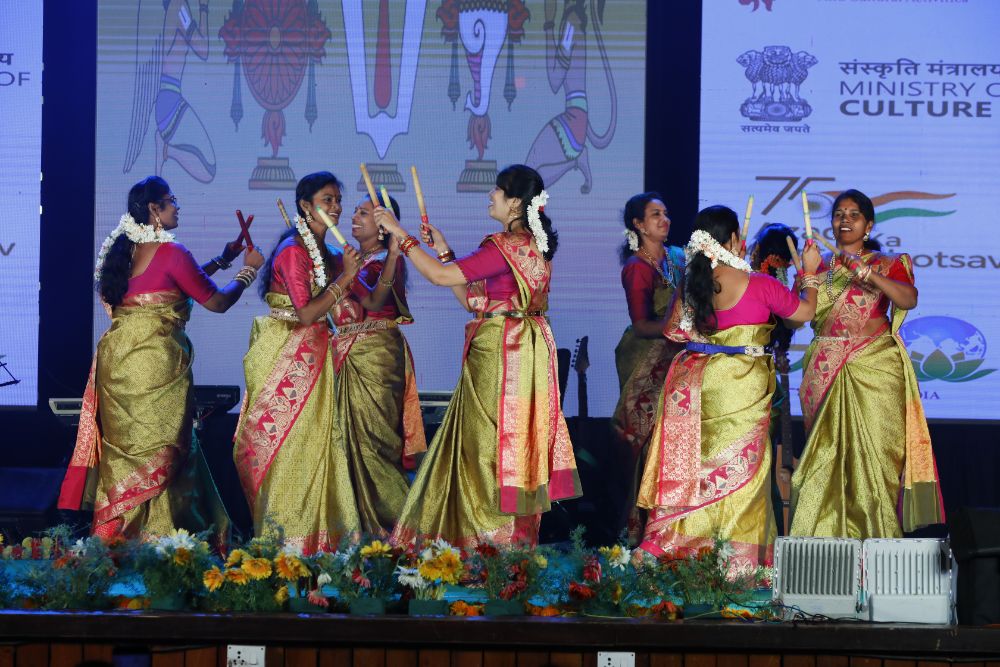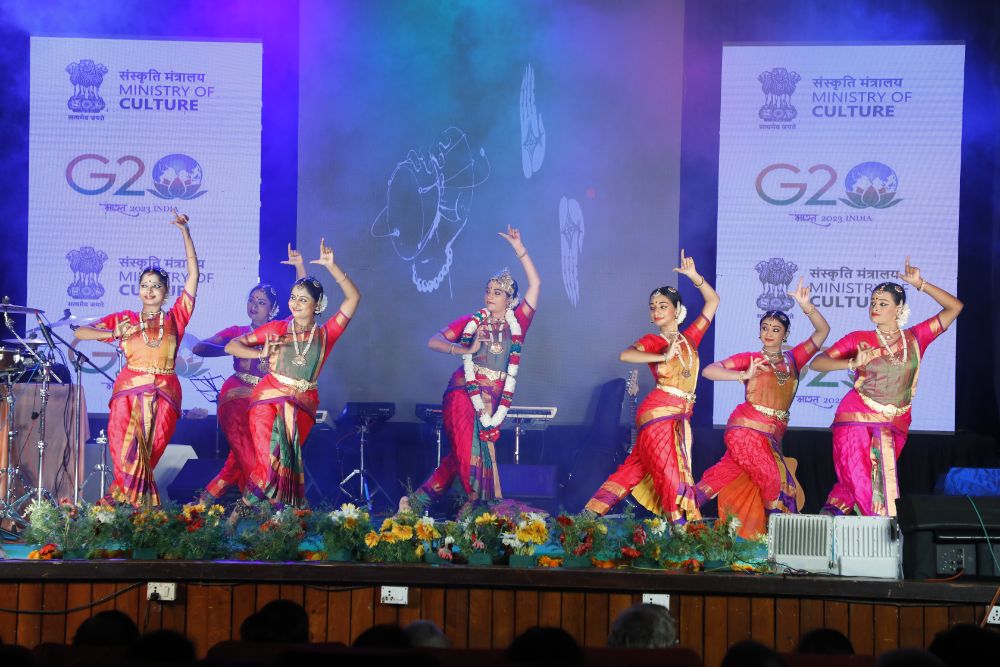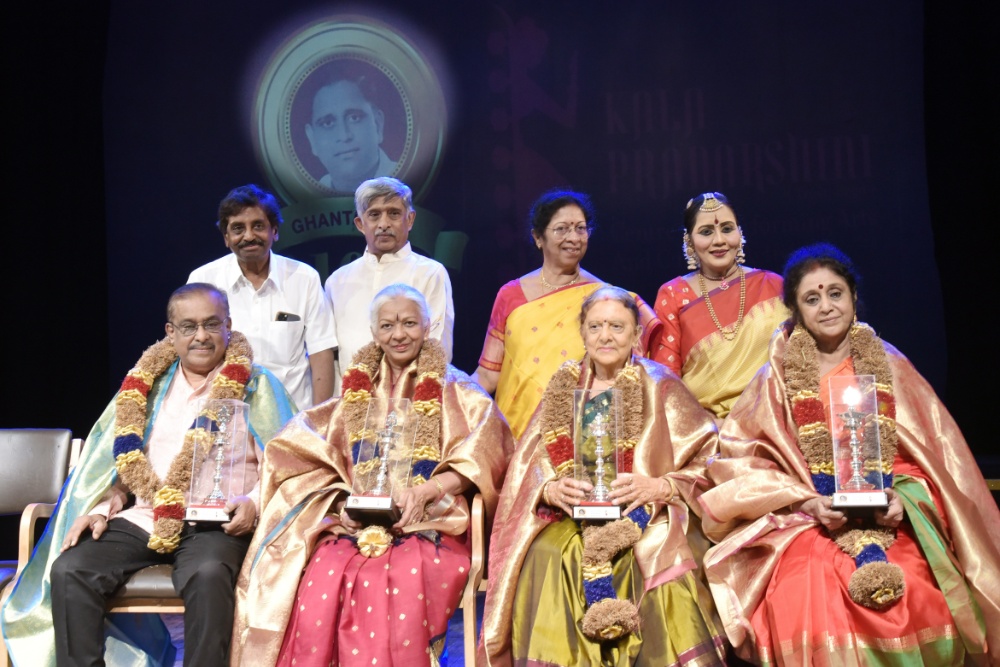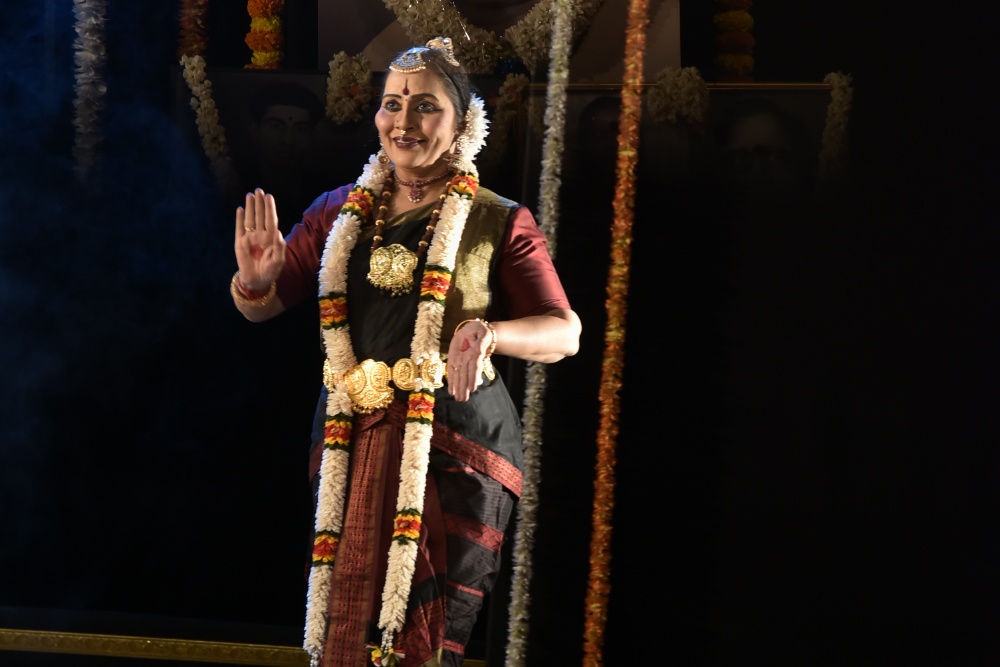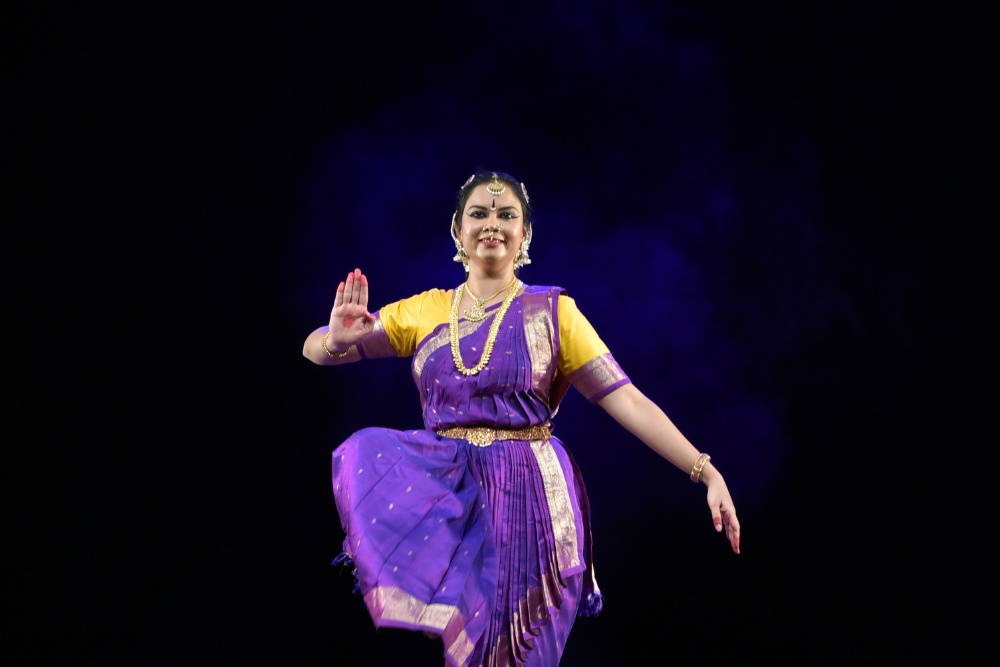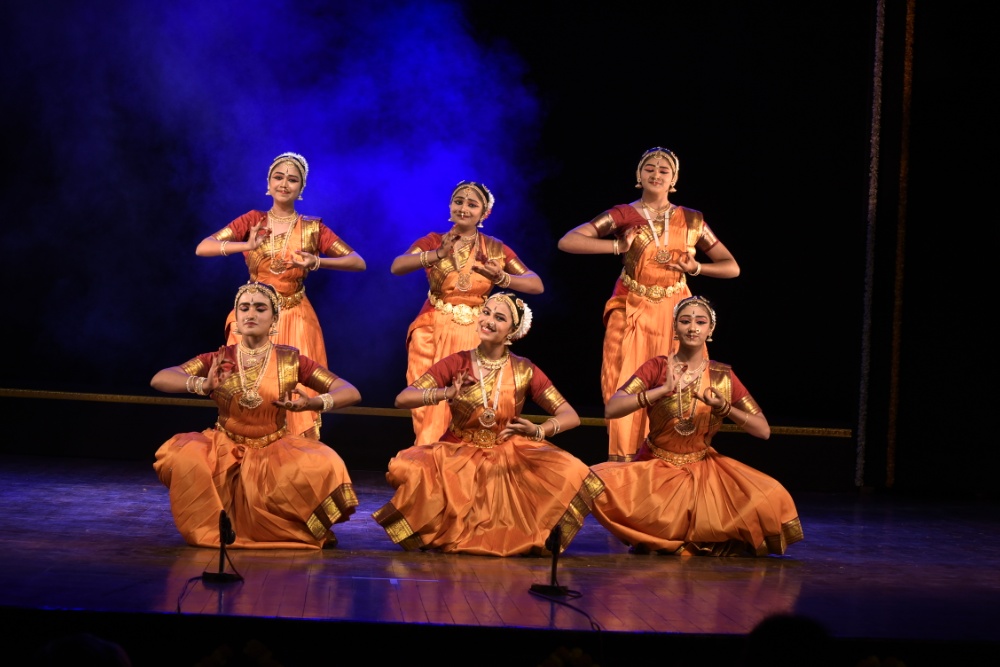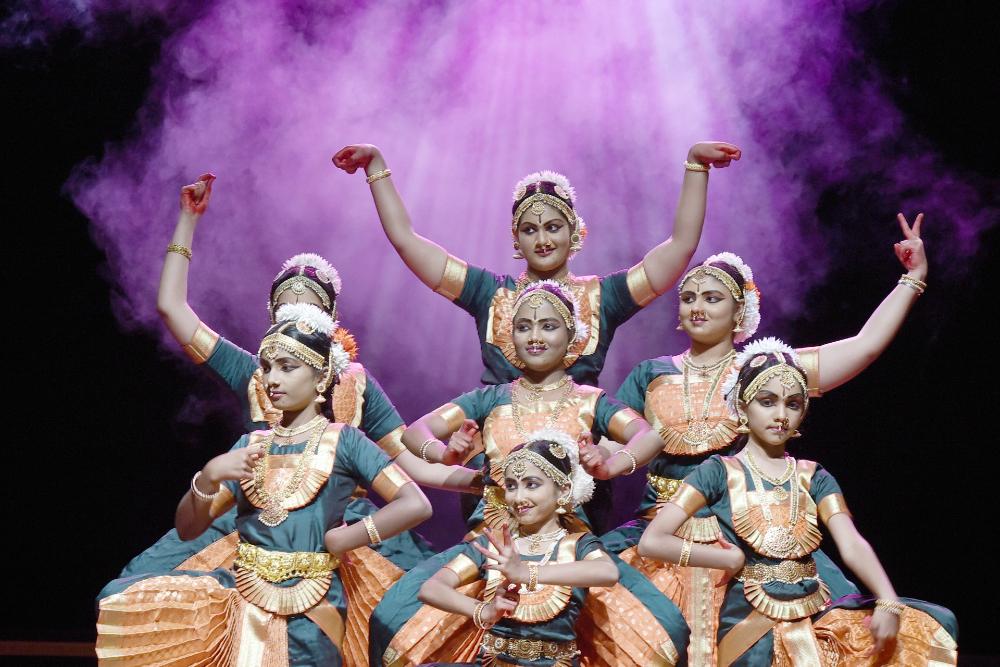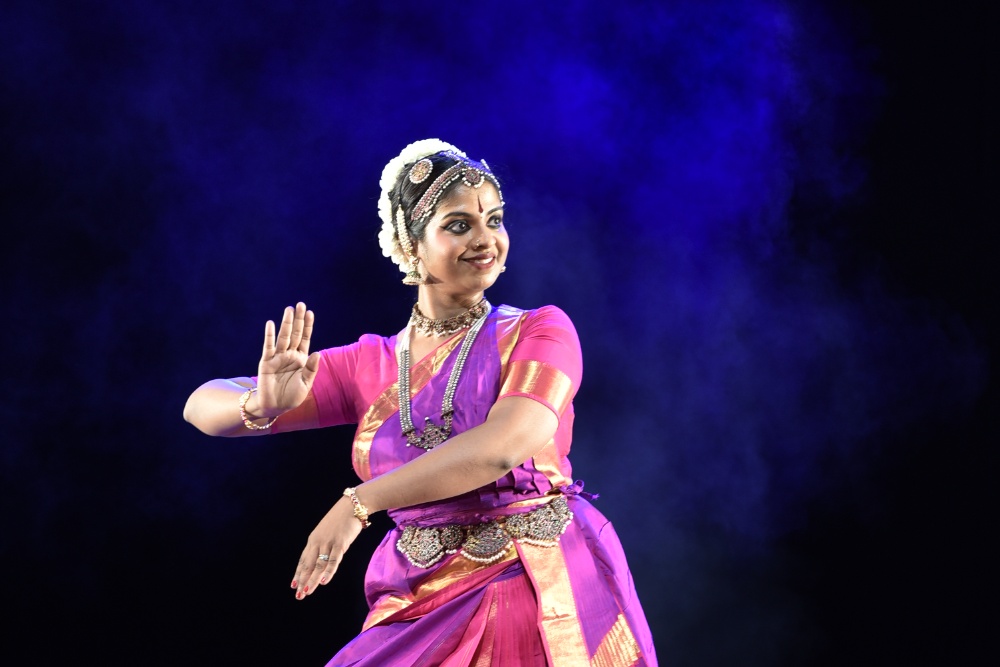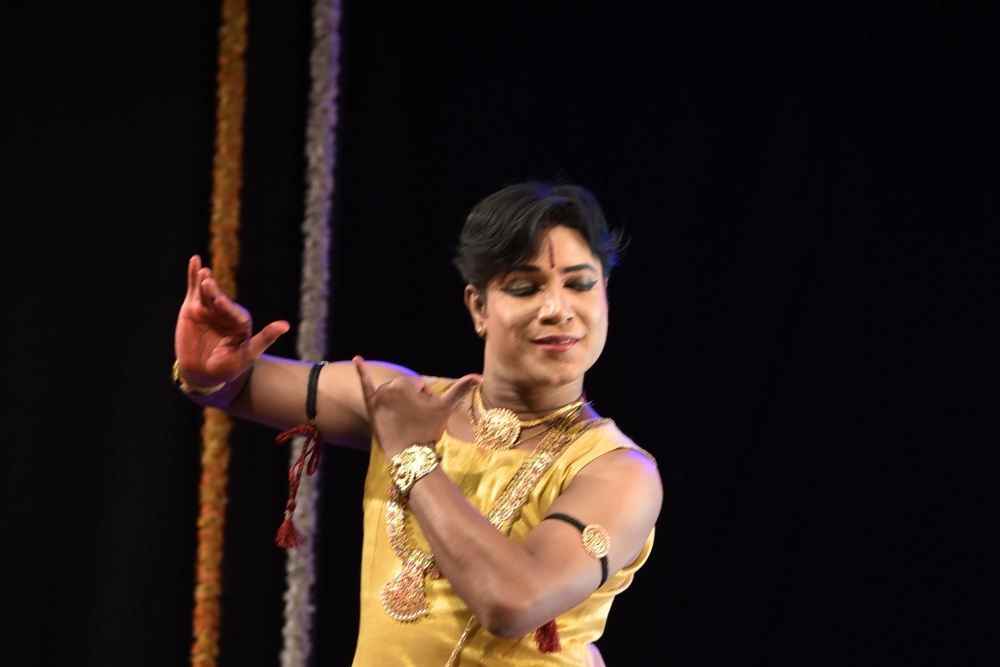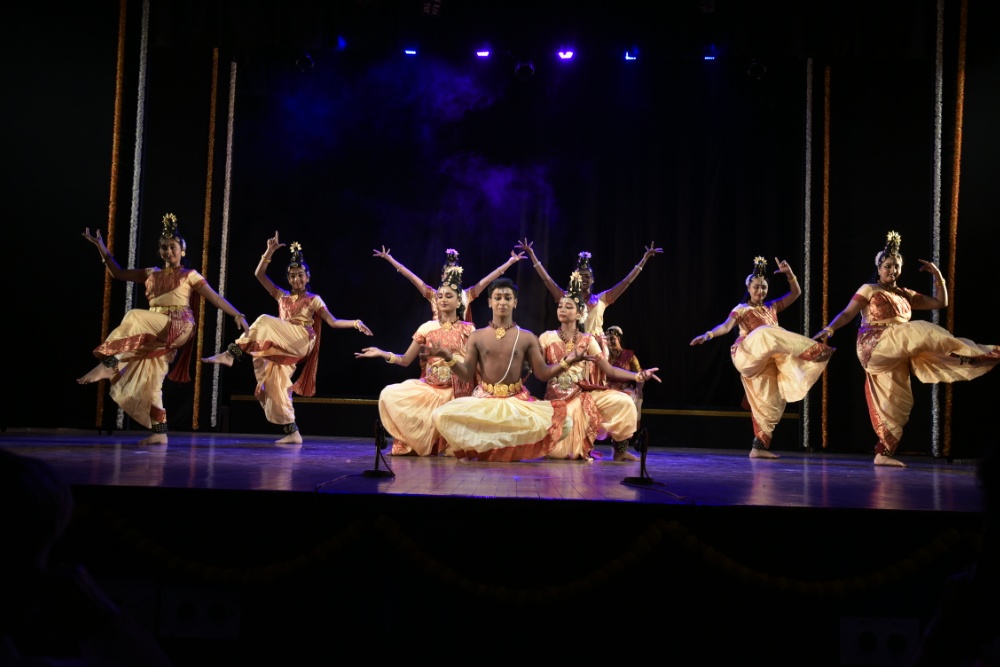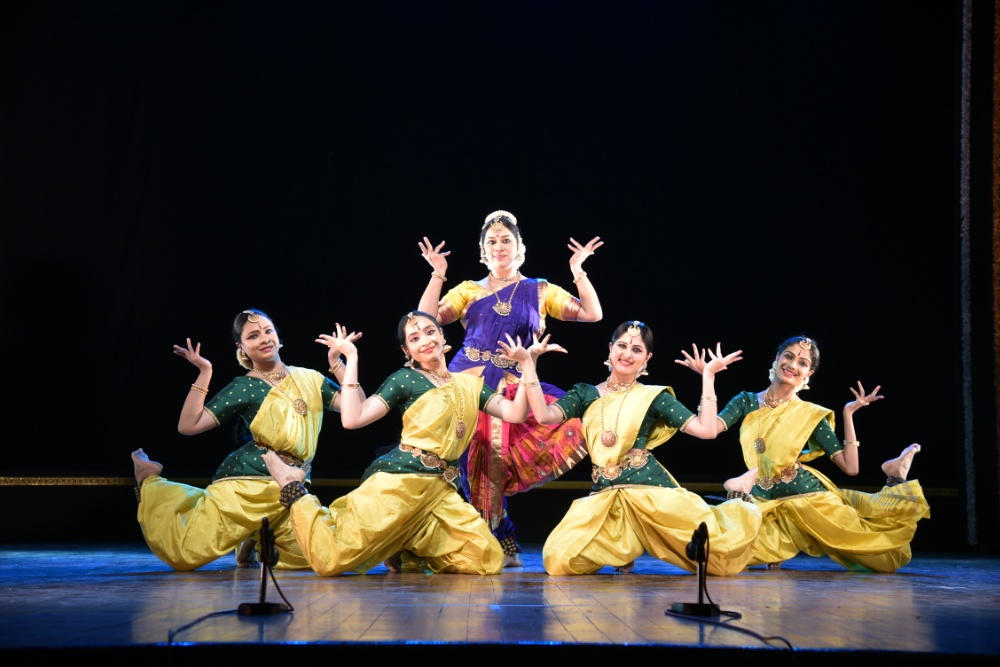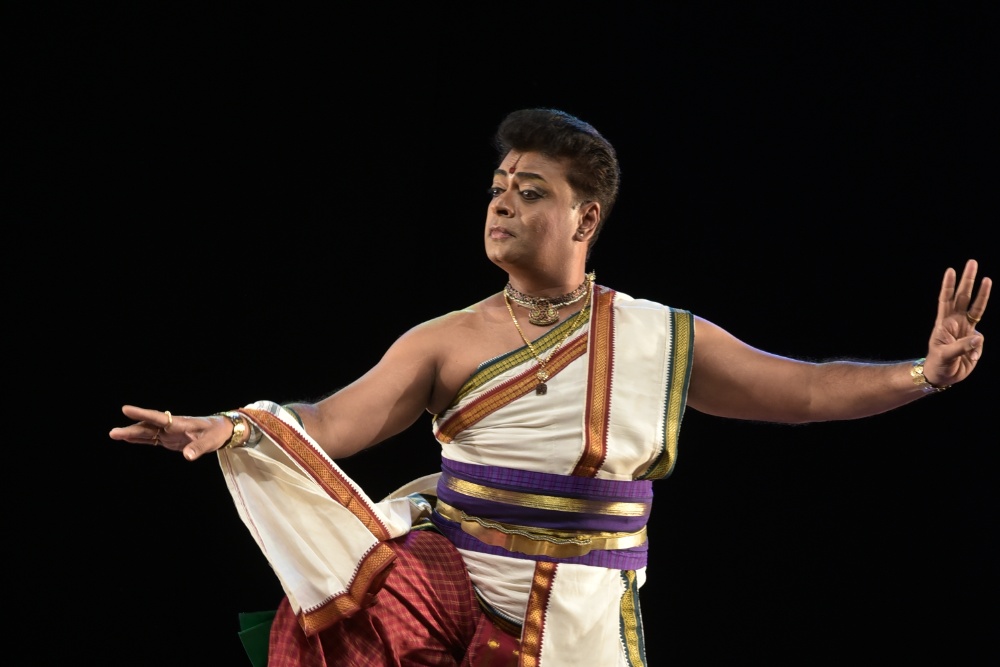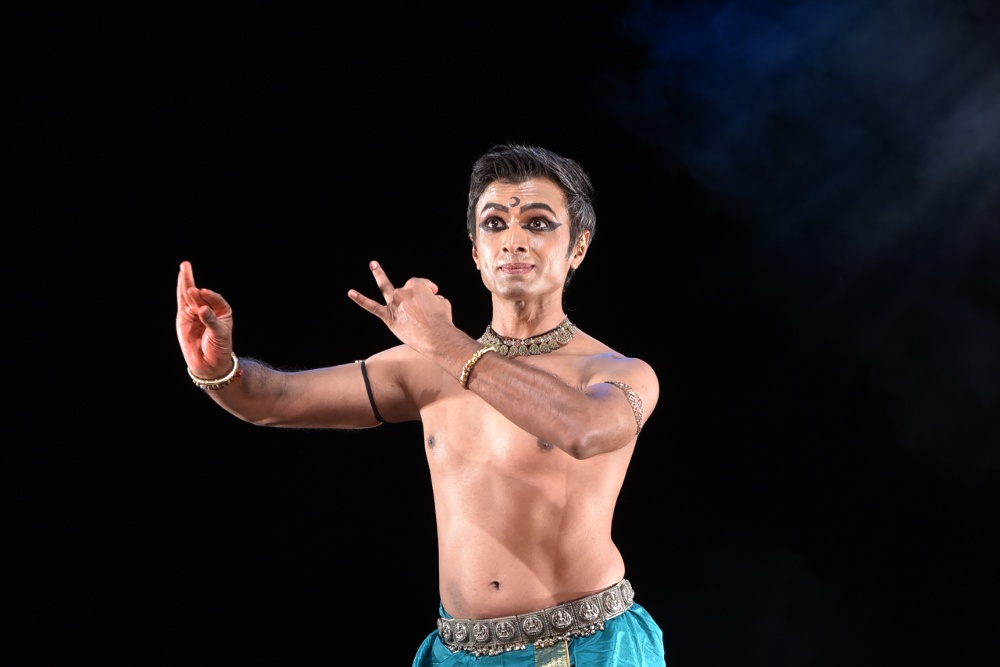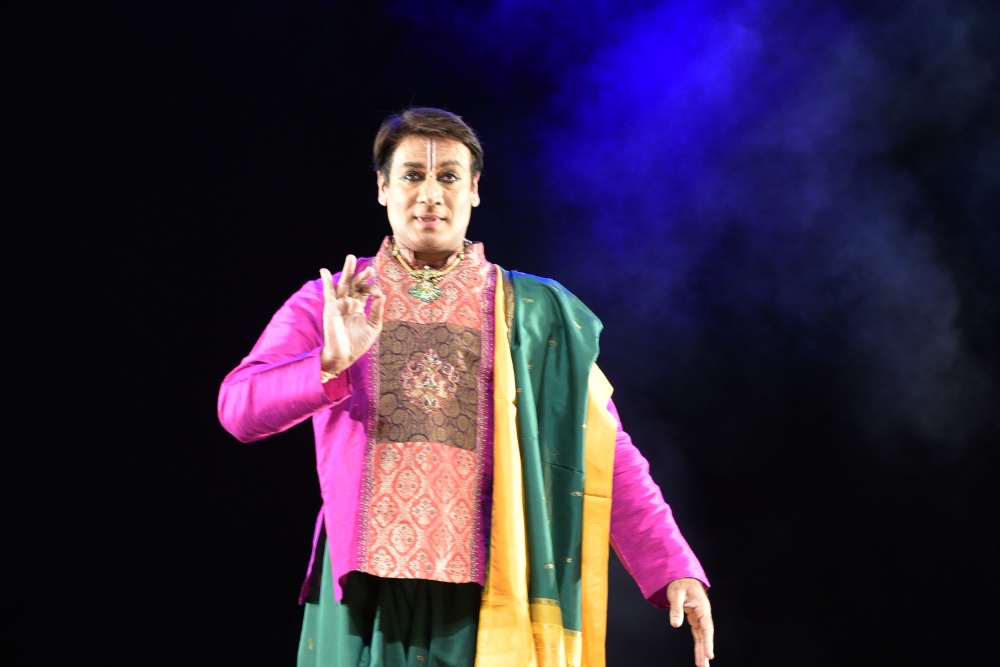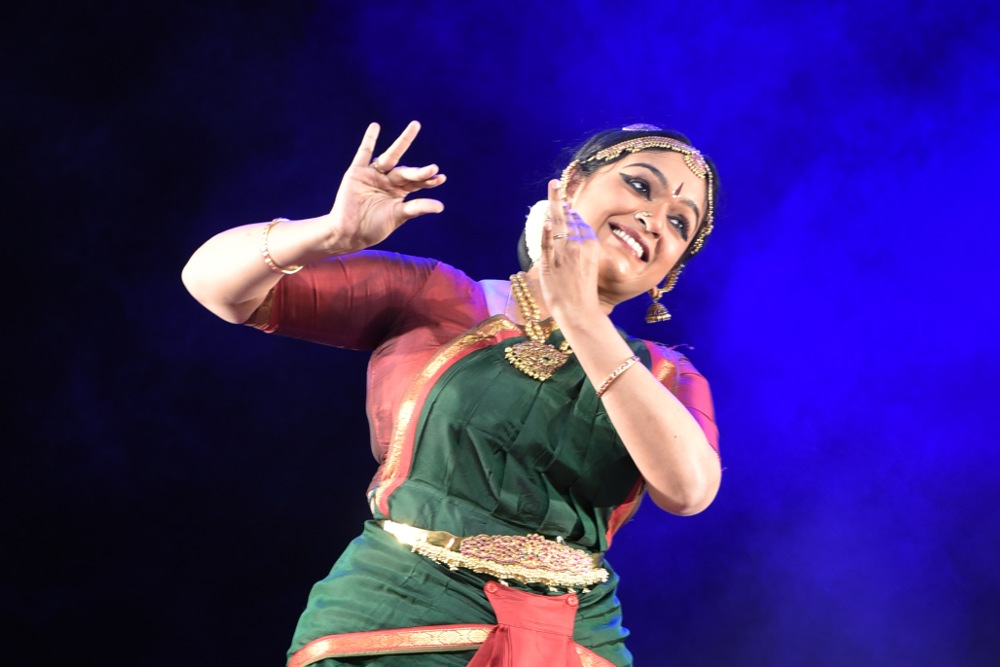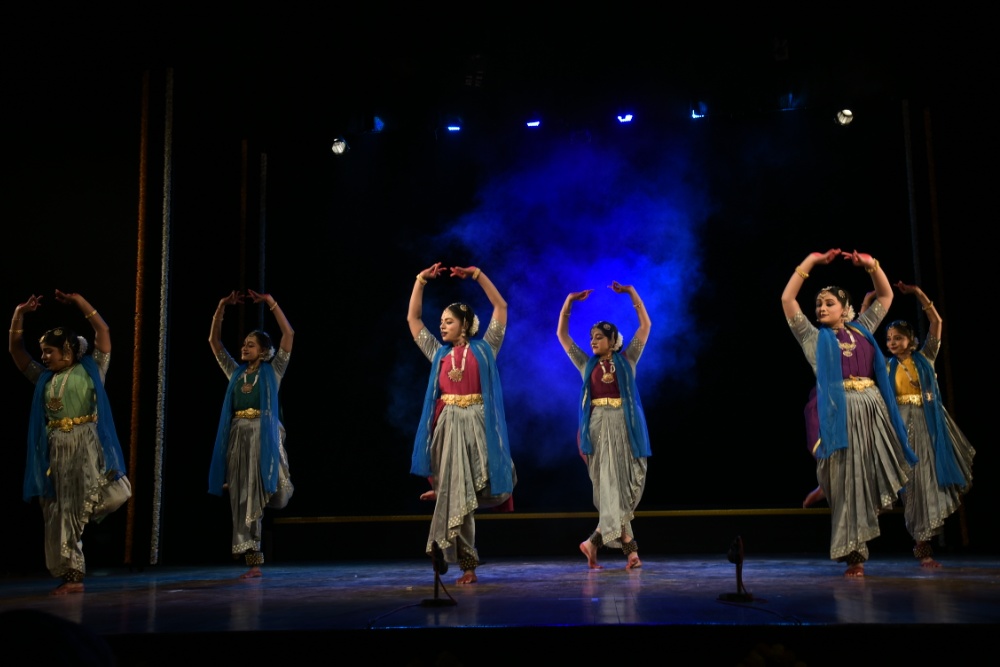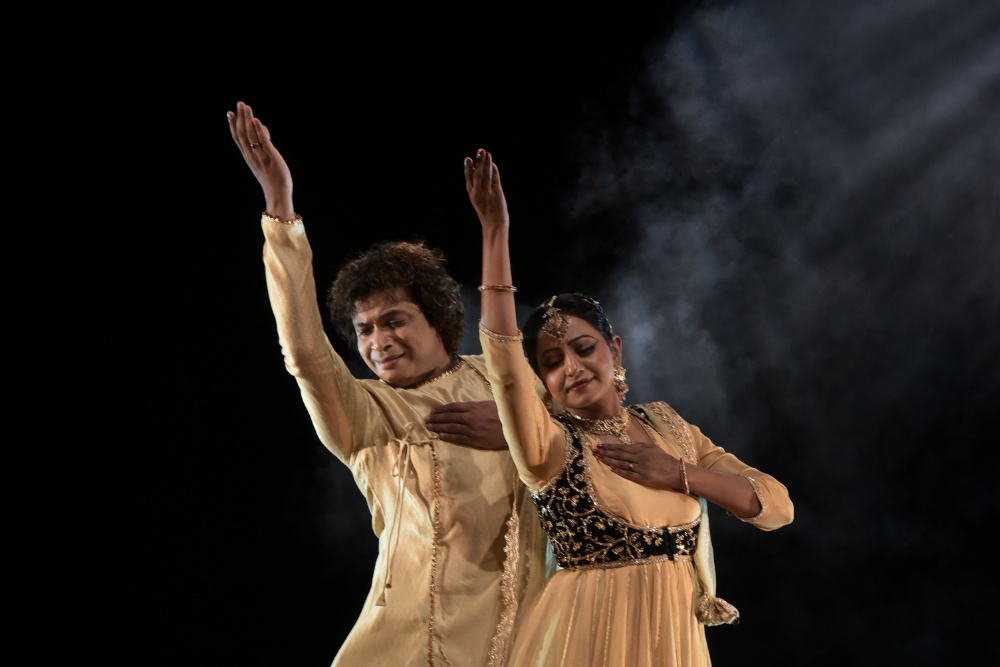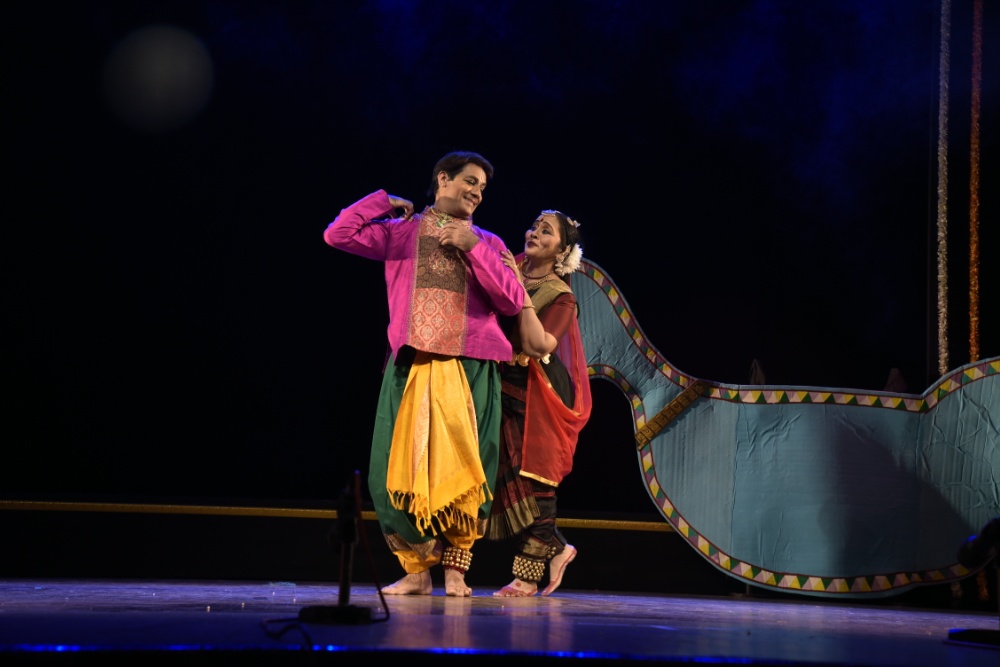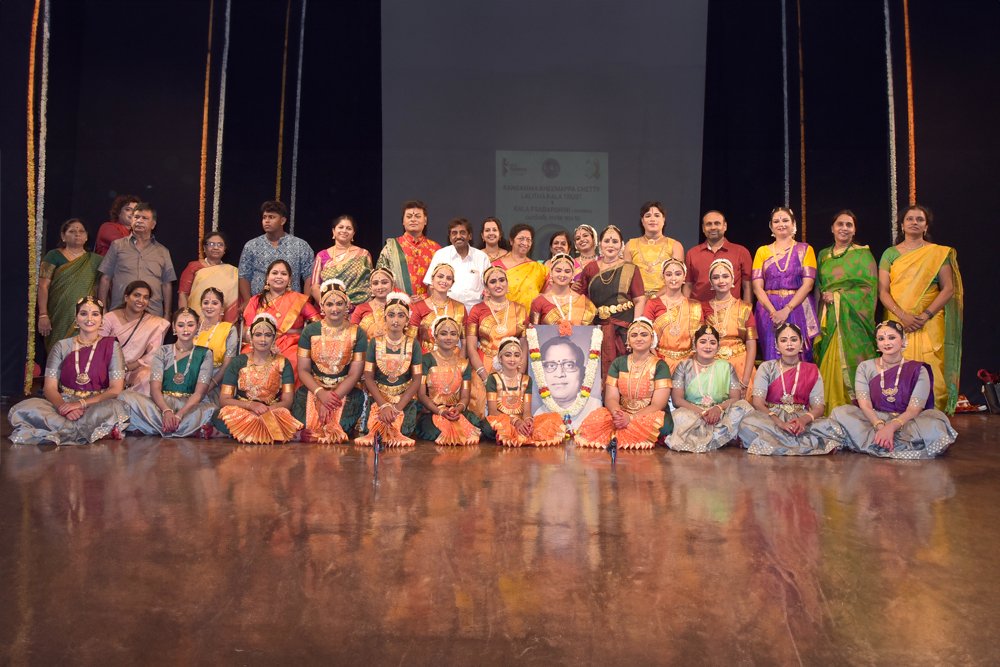SMT. VYJAYANTHIMALA BALI
GHANTASALA 96
Vyjayanthimala (born 13 August 1936) is an Indian film actress, Bharathanatyam dancer, Carnatic singer, dance choreographer and parliamentarian. She was the highest paid actress of her time. Regarded as the "first female superstar" and "Megastar" of Indian cinema, She made her debut in the Tamil language film Vaazhkai in 1949 and in the Telugu film Jeevitham in 1950. She later became one of the most prominent actresses of South Indian cinema and in the golden era of Bollywood and was known as one of the iconic leading actresses of all time. Vyjayanthimala was one of the biggest Bollywood stars with a career lasting almost two decades. She was the first star to completely change the standard and style of dancing in Indian cinema. It was because of her that Indian film actresses later on were expected to know classical dance. She was the first South Indian actress to become a Bollywood star and "paved a way" for other south Indian actresses to foray into Bollywood. Vyjayanthimala is an accomplished dancer and was one of those who introduced semi-classical dance to Bollywood. Her subsequent dance numbers in her films had earned her the title of "twinkle toes". Besides films, Vyjayanthimala's main concentration was in Bharata Natyam, a form of Indian classical dance. After quitting movies, Vyjayanthimala continued with her dance career. In addition, she was conferred with the Sangeet Natak Akademi Award, the highest Indian recognition given to practising artists. The award was presented to Vyjayanthimala in 1982 for her contribution in Bharata Natyam field. Moreover, Vyjayanthimala is an avid golfer and is one of the oldest in Chennai. She has also served as chairperson of 48th National Film Awards.
SHRI. C.V. CHANDRASEKHAR
GHANTASALA 96
C. V. Chandrasekhar (born 22 May 1935) is an Indian Bharatanatyam dancer, academician, dance scholar, composer, and choreographer. He retired as Head of the Faculty of Performing Arts of M.S. University, Baroda in 1992.Professor Chandrashekhar and wife Jaya Chandrasekhar are one of the best known dancing couples of Bharata Natyam in India, during the 1970s and ’80s, they performed with their daughters Chitra and Manjari. He now runs his own dance institution, Nrityashree, in Chennai. He was awarded the Sangeet Natak Akademi Award for Bharatnatyam in 1993, by the Sangeet Natak Akademi, India's National Academy of Music, Dance and Drama, and received the Kalidas Samman in 2008. In 2011, he was honoured with the Padma Bhushan by the Government of India.Chandrasekhar started his dancing career in 1947, when there were few male dancers. He served at the Banaras Hindu University and later joined M.S. University of Baroda, where he retired as the Head and Dean of the Faculty of Performing Arts in 1992. C.V. Chandrasekhar is a multi-faceted personality being a dancer, choreographer, researcher, musician, academician, composer and highly acclaimed teacher of Bharatanatyam. He has been performing for the past six decades in India and all over the globe and is invited by many dancers the world over to teach and to choreograph. He continues to perform on stage well into his seventh decade.
SMT. SAROJA VAIDYANATHAN
GHANTASALA 96
Saroja Vaidyanathan (born 19 September 1937) is a choreographer, guru and a notable exponent of Bharatanatyam. Saroja gave up dancing after her marriage following conservative and adverse reactions to her performing in public venues and took instead to teaching children dance at home. Following her husband's transfer to Delhi in 1972, she established the Ganesa Natyalaya there in 1974. She was monetarily supported by well wishers and sponsors and the building for the Natyalaya came up at the Qutub Institutional Area in 1988. Besides the dance itself, students at the Ganesh Natyalaya are also taught Tamil, Hindi and Carnatic vocal music to give them a holistic understanding of Bharatanatyam. Saroja is a prolific choreographer and has to her credit ten full length ballets and nearly two thousand individual Bharatanatyam items.She undertook a cultural tour of South East Asia in 2002, accompanying Prime Minister Atal Bihari Vajpayee's visit to the ASEAN Summit in 2002. She has also published her renditions of Subramania Bharati's songs and poems and some of his works have also been set to dance by her. Saroja was conferred the Padma Shri in 2002 and the Padma Bhushan in 2013 by the Government of India. She is also the recipient of the Sahitya Kala Parishad Samman of the Government of Delhi, the Kalaimamani title bestowed by the Tamil Nadu Eyal Isai Nataka Manram and the Sangeet Natak Akademi Award. She was conferred the title of 'Bharata Kalai Sudar' in 2006.
SMT. SHOBA NAIDU
GHANTASALA 96
Sobha Naidu (1956 - 14 October 2020) was among the foremost Kuchipudi dancers of India and a disciple of the renowned master Vempati Chinna Satyam. She mastered the technique of Kuchipudi and began dancing lead roles in dance-dramas while still very young. She performed with her guru's troupe all over the country and abroad, excelling in the roles of Satyabhama and Padmavati. She was also an excellent solo dancer. Principal of Kuchipudi Art Academy, Hyderabad, Sobha Naidu imparted training to younger students over the past few years. In 2010, the school celebrated the completion of 30 years. She also choreographed several dance-dramas. She received the title of Nritya Choodamani from Krishna Gana Sabha, Madras. With 12 years of rigorous sadhana, some of her best roles are her portraits of Sathyabhama, Padmavathi and Chandalika. She choreographed 80 solo numbers, 15 ballets, and trained over 1,500 students from India and overseas. Padma Shri award in 2001
SMT. LEELA SAMSON
GHANTASALA 96
Leela Samson (born 6 May 1951) is a Bharatanatyam dancer, choreographer, instructor and writer from India. As a soloist she is known for her technical virtuosity and has taught Bharatanatyam at Shriram Bhartiya Kala Kendra in Delhi for many years. She was appointed as the director of Kalakshetra by the Congress-led United Progressive Alliance in April 2005. She was subsequently also appointed as the chairperson of the Sangeet Natak Akademi in August 2010 and as the chairperson of the Central Board of Film Certification (CBFC) in April 2011. She resigned from her position as director of Kalakshetra in 2012. In 1995, Samson formed Spanda, a dance group to review the traditional vocabulary of Bharatanatyam. Two documentary films – Sanchari and The Flowering Tree – have been made on her works. She authored a biography of Rukmini Devi Arundale. Samson has received the Padma Shri (1990), the Sanskriti, Nritya Choodamani, Kalaimamani (2005) given by Government of Tamil Nadu, and the Sangeet Natak Akademi Award (1999–2000) for contributions to Bharatanatyam.
DHANANJAYANS
GHANTASALA 96
Vannadil Pudiyaveettil Dhananjayan (born 17 April 1939) and Shanta Dhananjayan (born 12 August 1943), also known as the Dhananjayans, are a dancing couple of India and were awarded Padma Bhushan in 2009. They sent her at age eight to Kalakshetra in June 1952, a year before Dhananjayan, where she later graduated with a Post-Graduate Diploma with distinction in Bharatanatyam and also learned Kathakali and Carnatic music. She was a leading female dancer at Kalakshetra from 1955–1968. Dhananjayan received a scholarship at Kalakshetra to study Bharatanatyam, Kathakali, Mridangam and music. Shanta trained in Bharatanatyam and music apart from other subjects for nearly a decade. They believe that whatever they have been able to achieve today is due to the painstaking mentoring of their Gurus Rukmini Devi Arundale and Chandu Panicker and various other faculty members of Kalakshetra such as NS Jayalakshmi and Sarada Hoffman. The Dhananjayans left Kalakshetra in the late 1960s to build a career on their own. During that time, only the wealthy and aristocrats who could spend to have their own children perform, dominated the dance scene in Chennai. However, the calibre of the Dhananjayans was such that they stole the thunder with their novel ideas that they brought to their presentations through a unique repertoire that they developed. The vitality of dance, their costumes, the attraction of merging of the male and female dance principles in specially conceived duets were all part of the charisma of their performances. They started to receive invitations from both within the country and from abroad. They have travelled all over the world to major cultural centres to present their art. 1. Padma Bhushan, Government of India, 2009 2. Sangeet Natak Academy Award, Government of India, 1994 3. Kerala Sangeet Natak Academy Fellowship, 1993 4. Kalaimamani Award, Tamil Nadu Government, 1990

